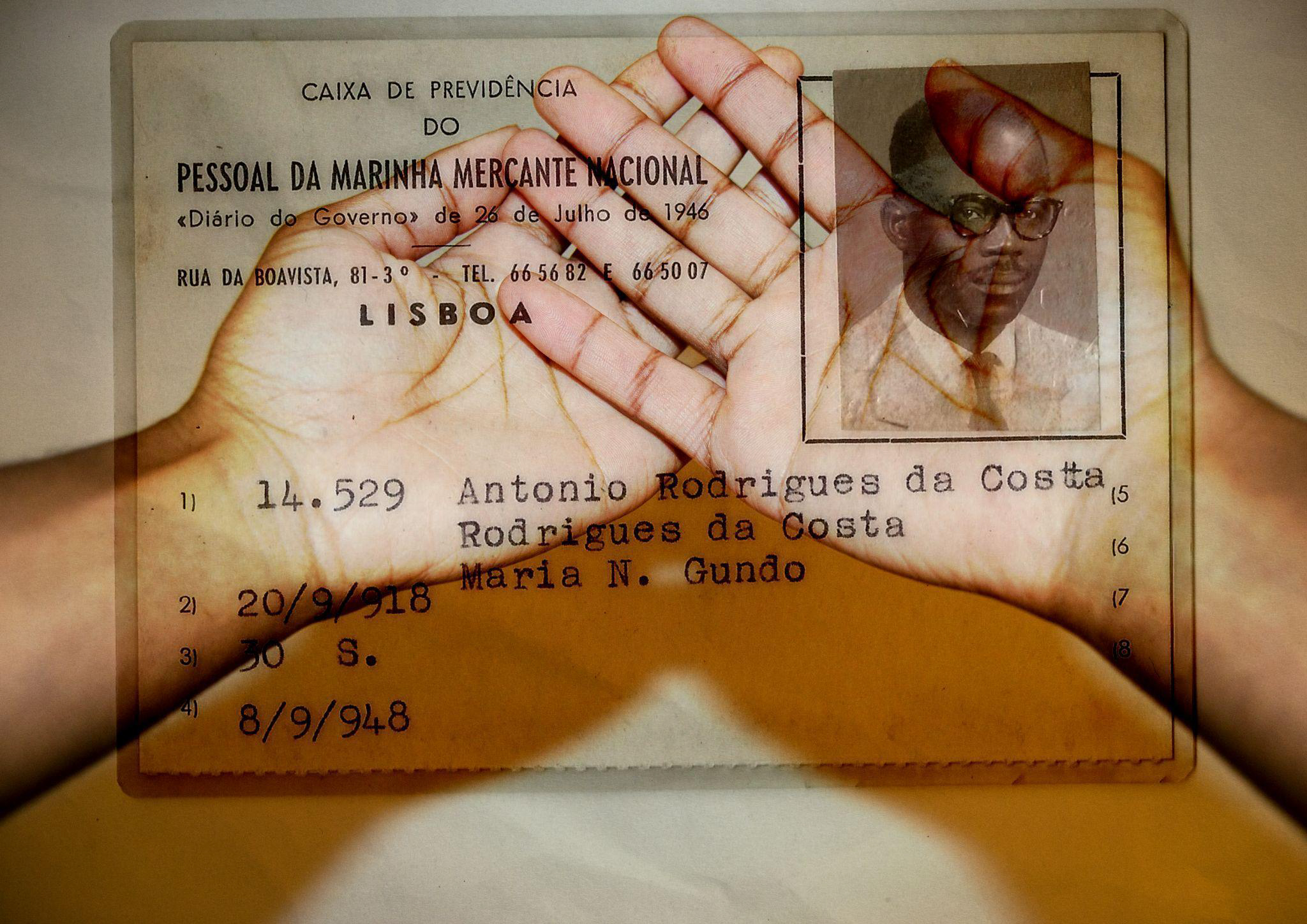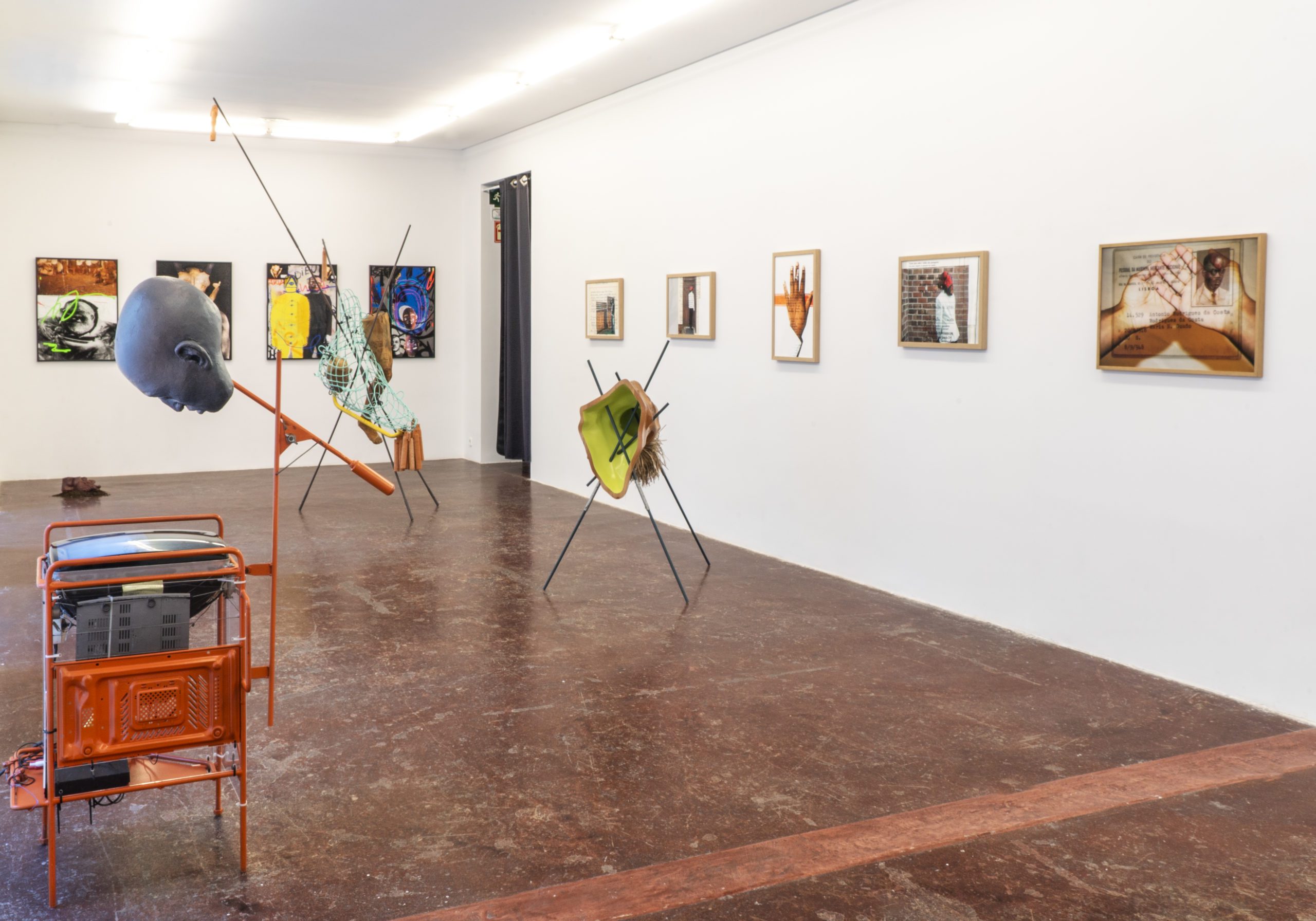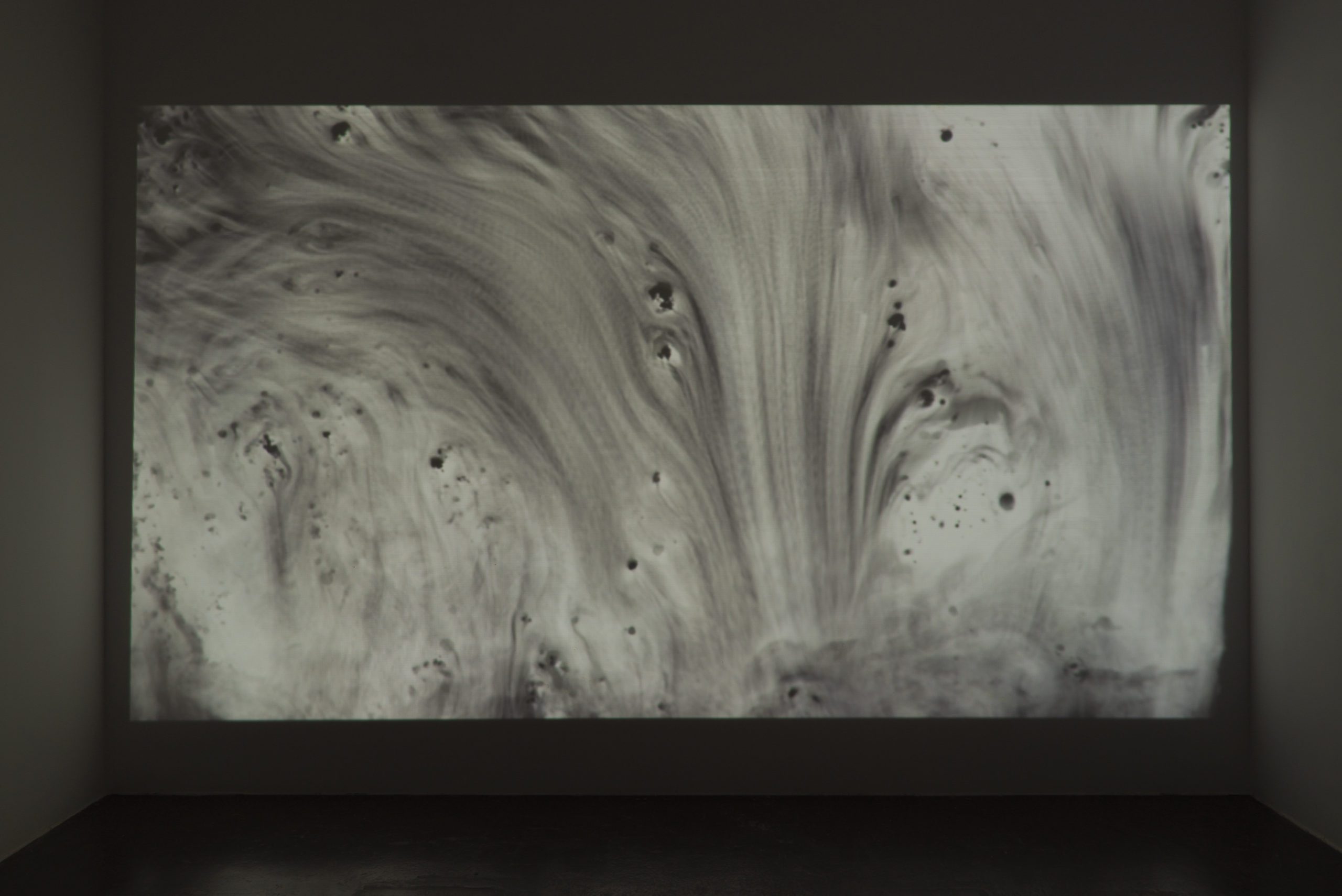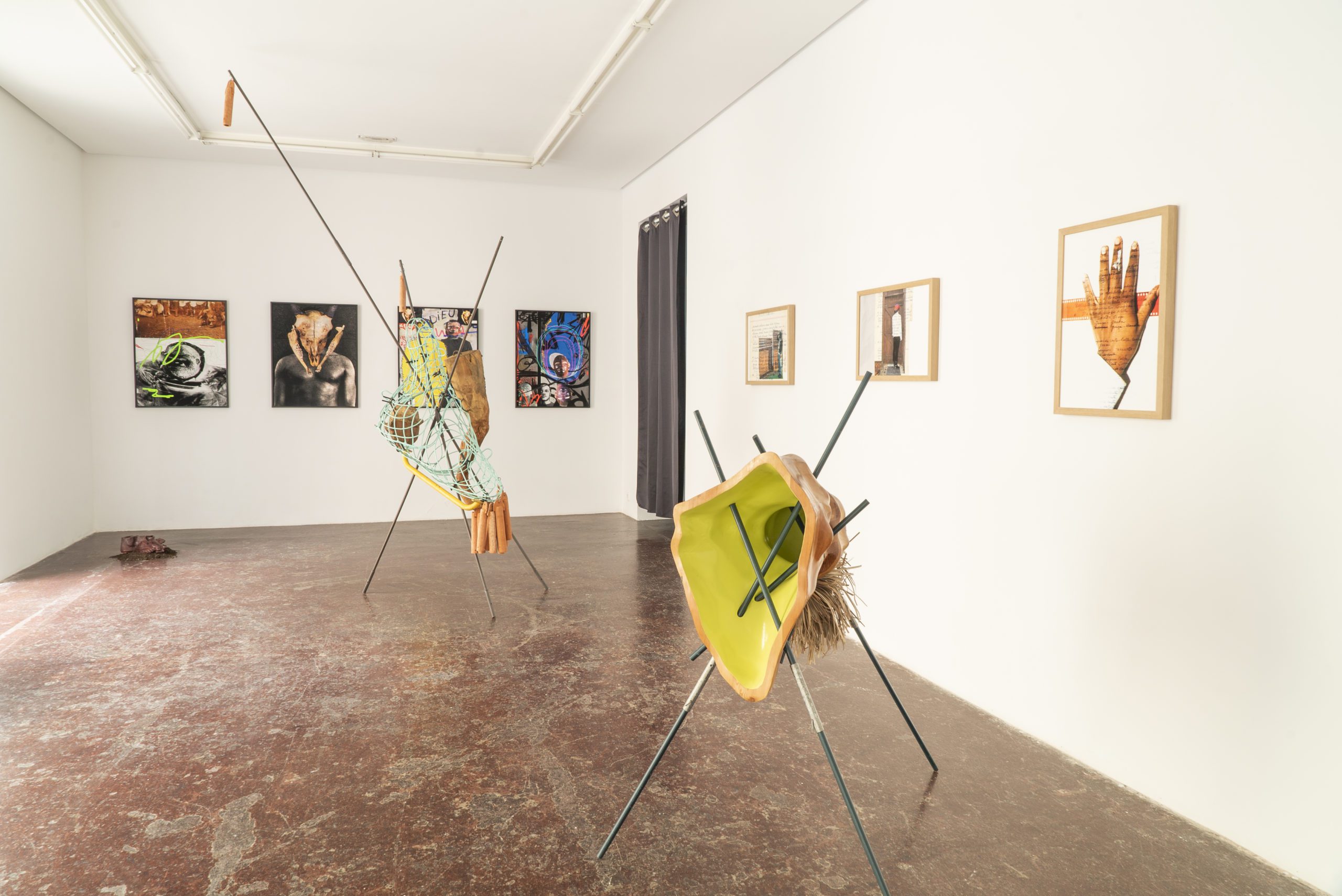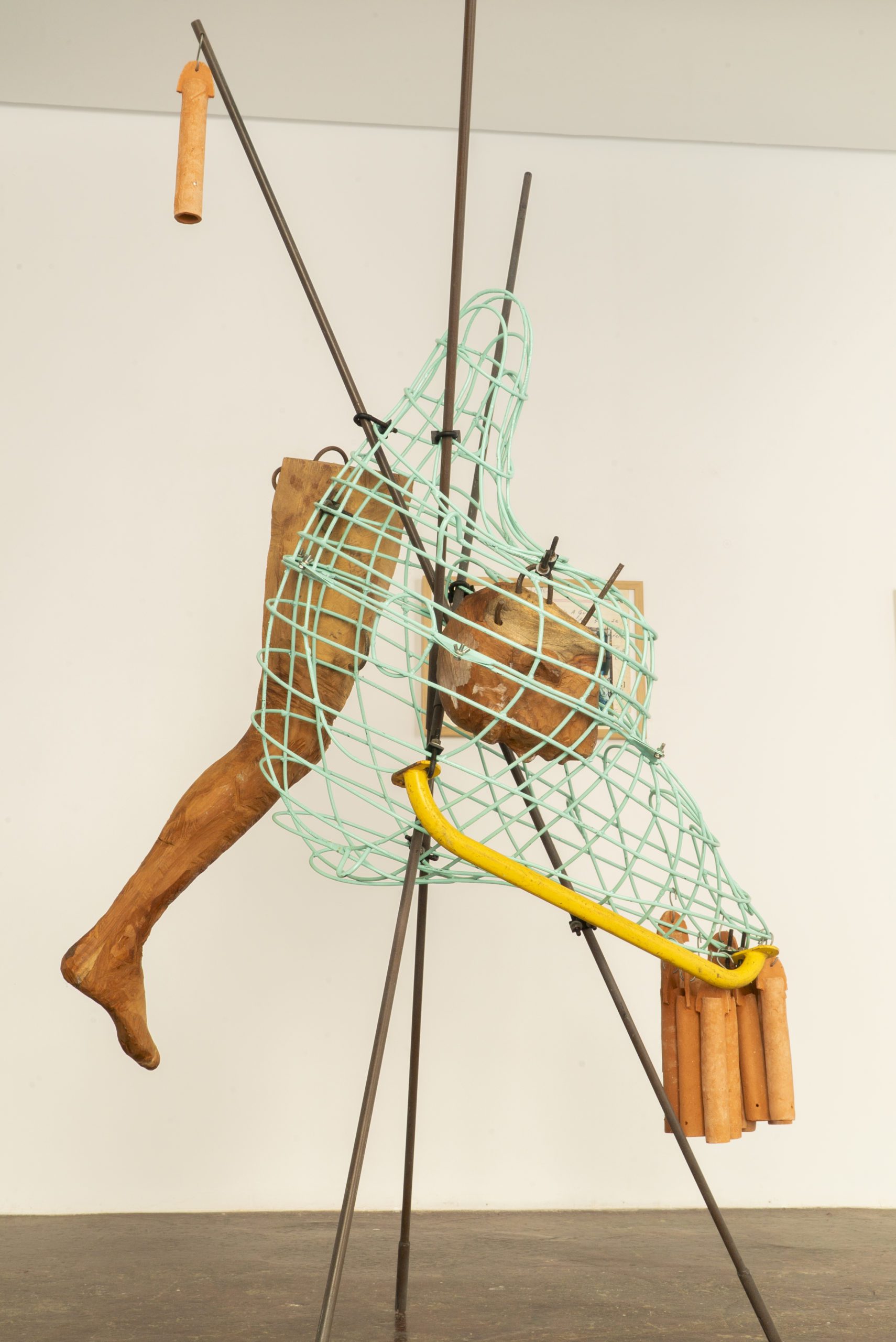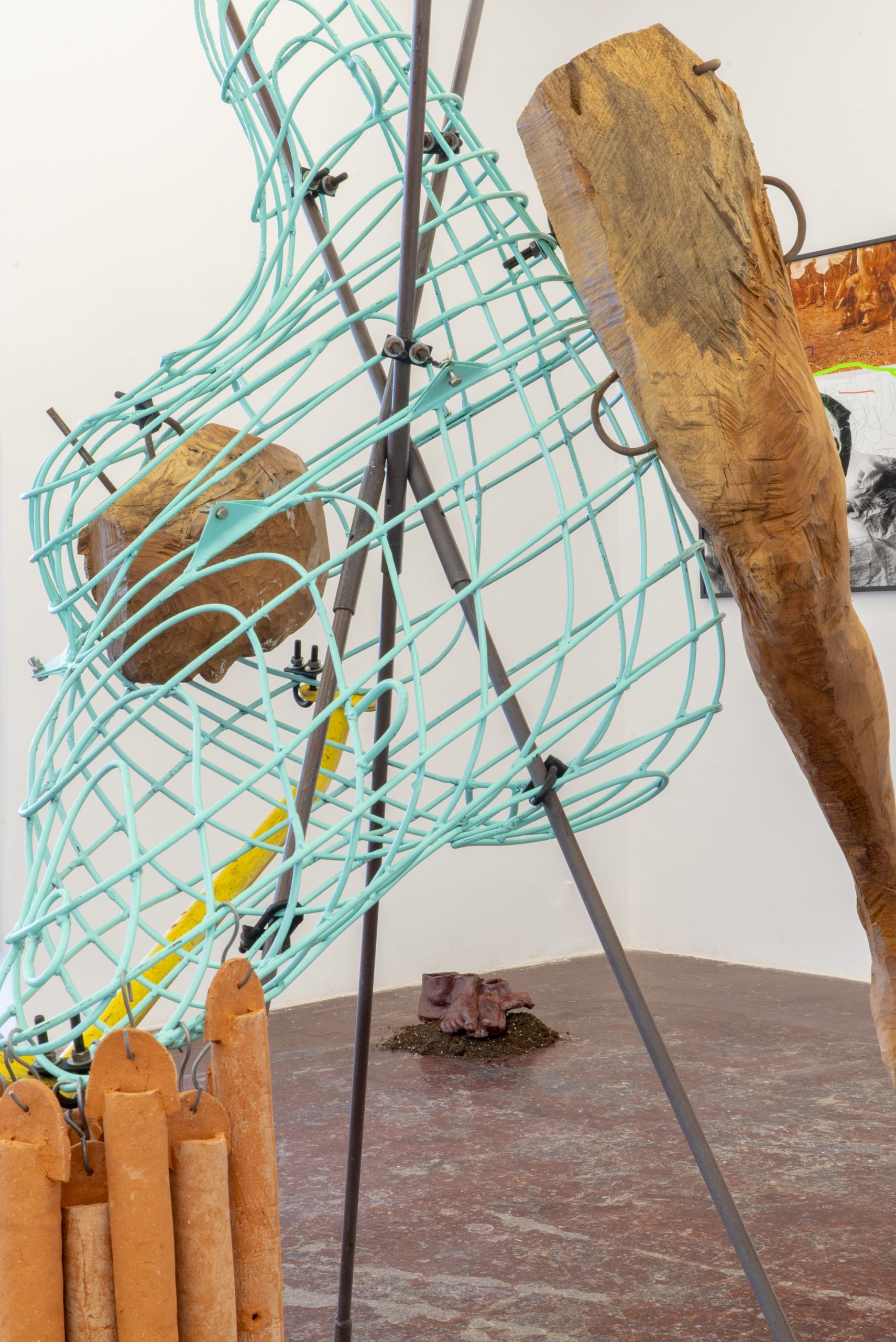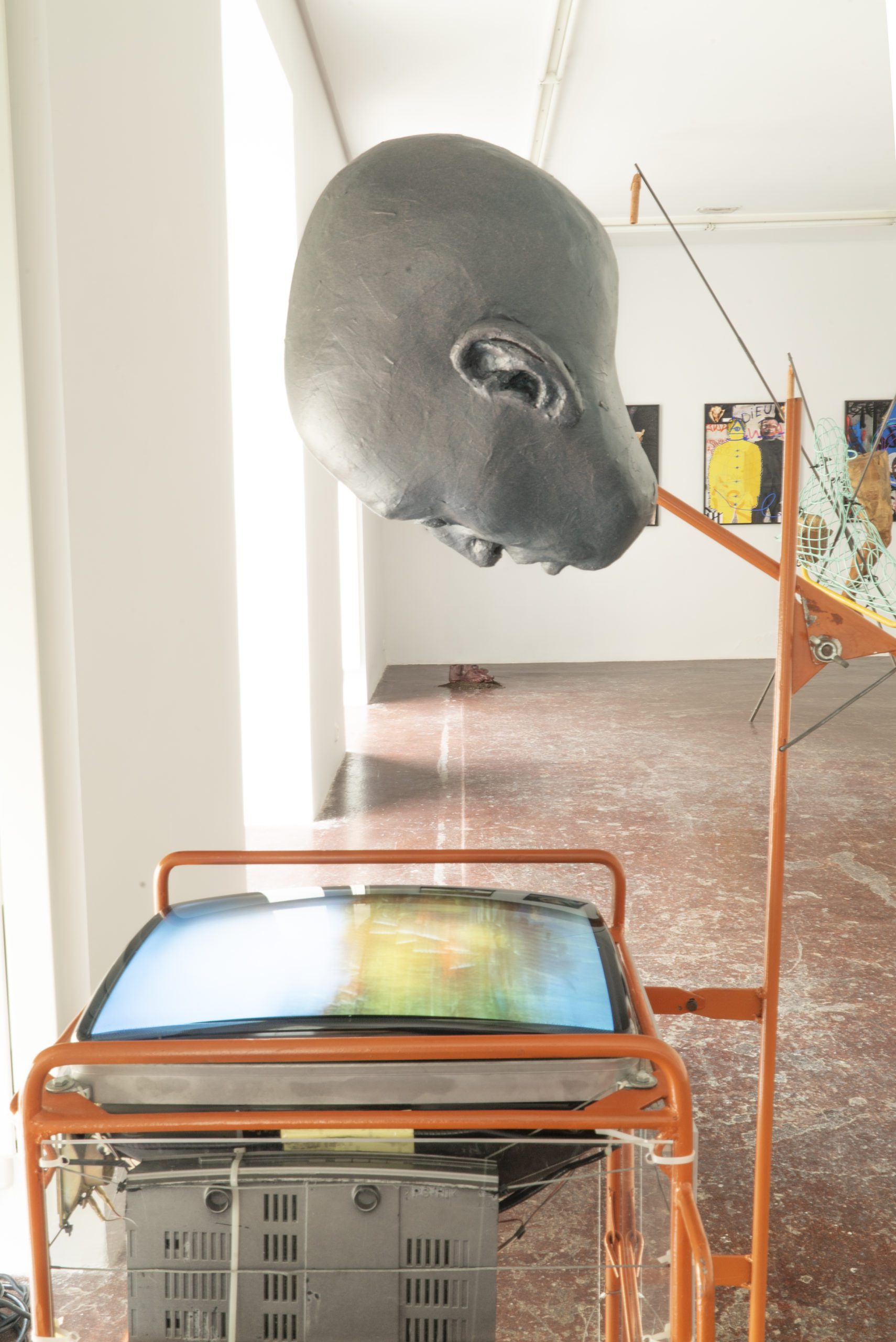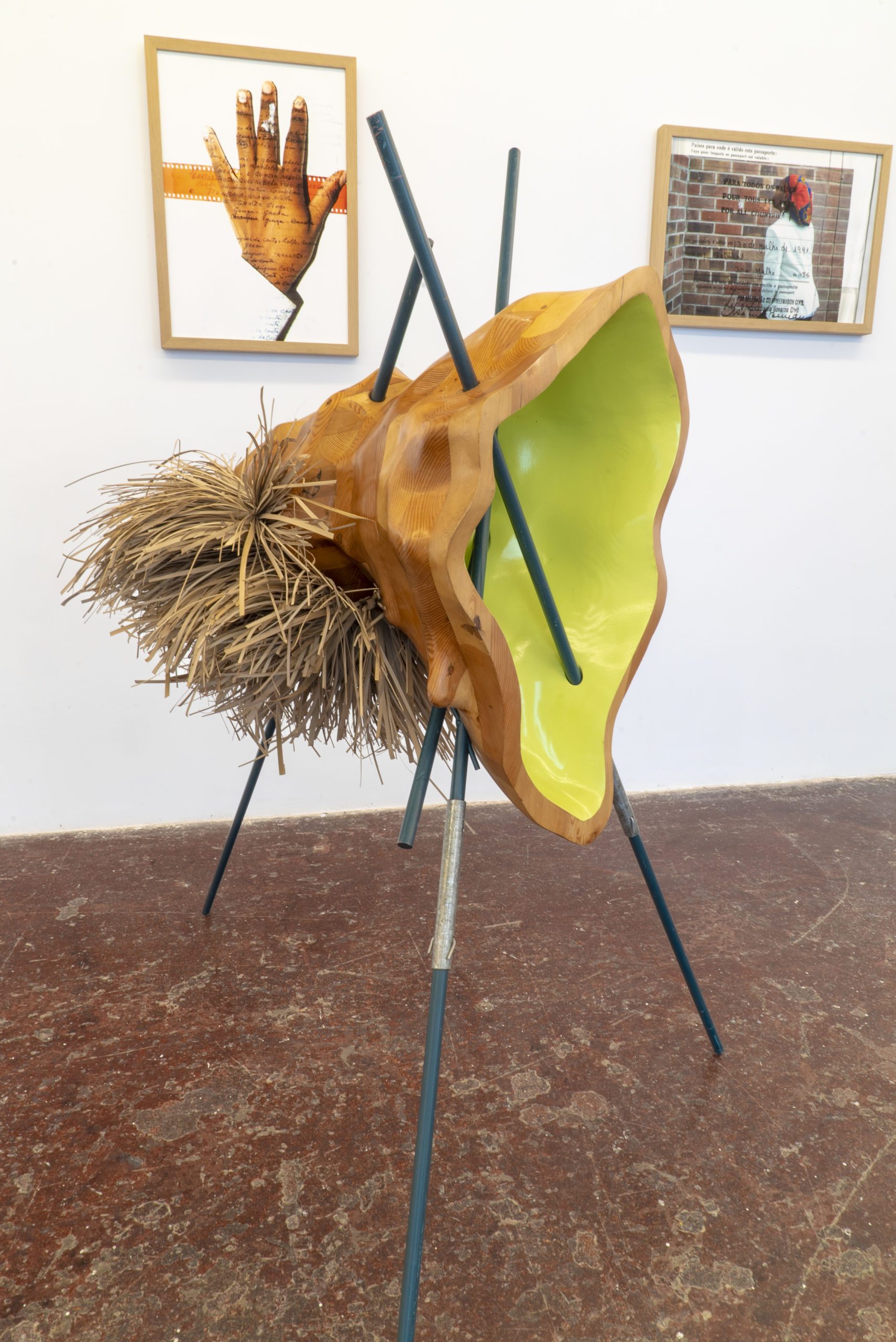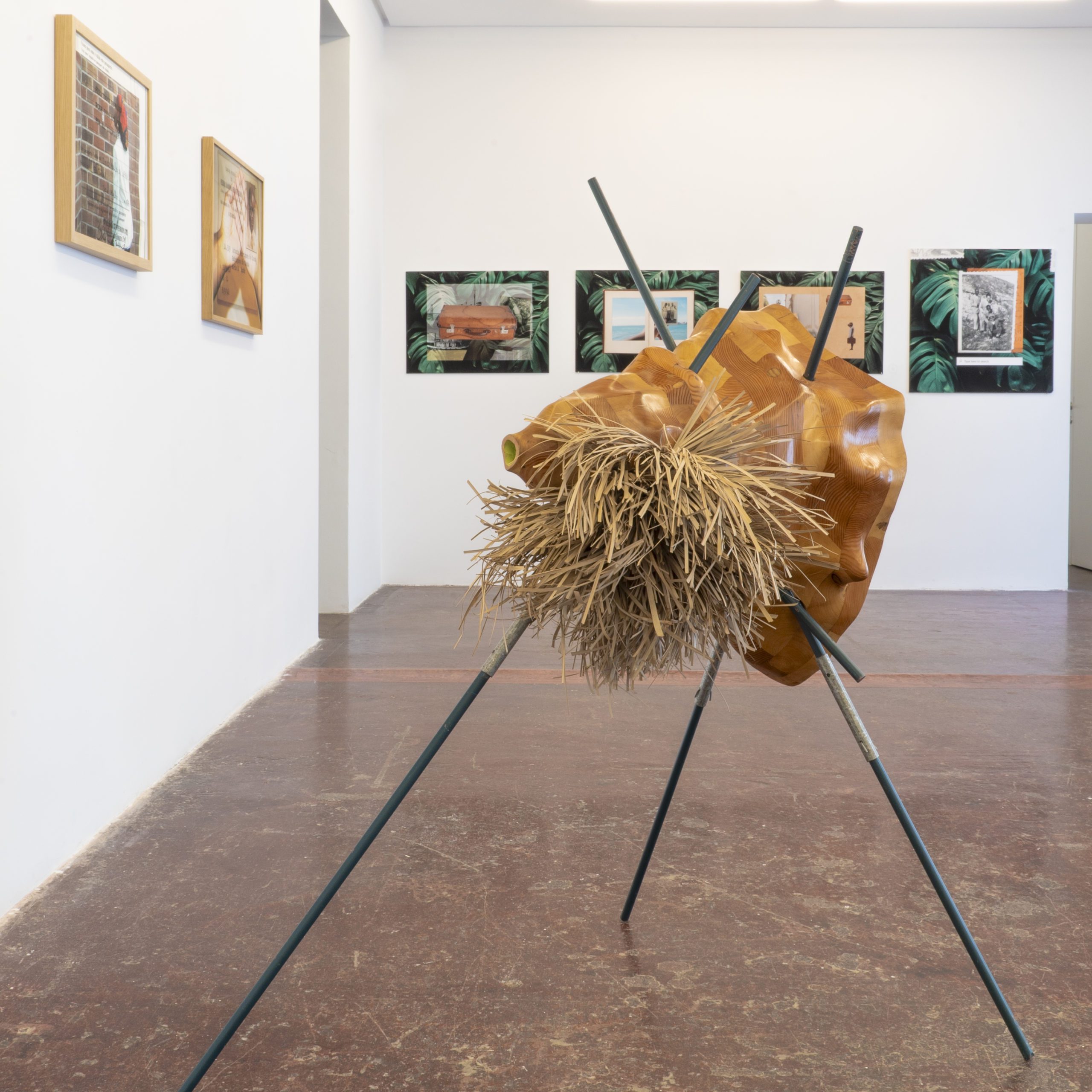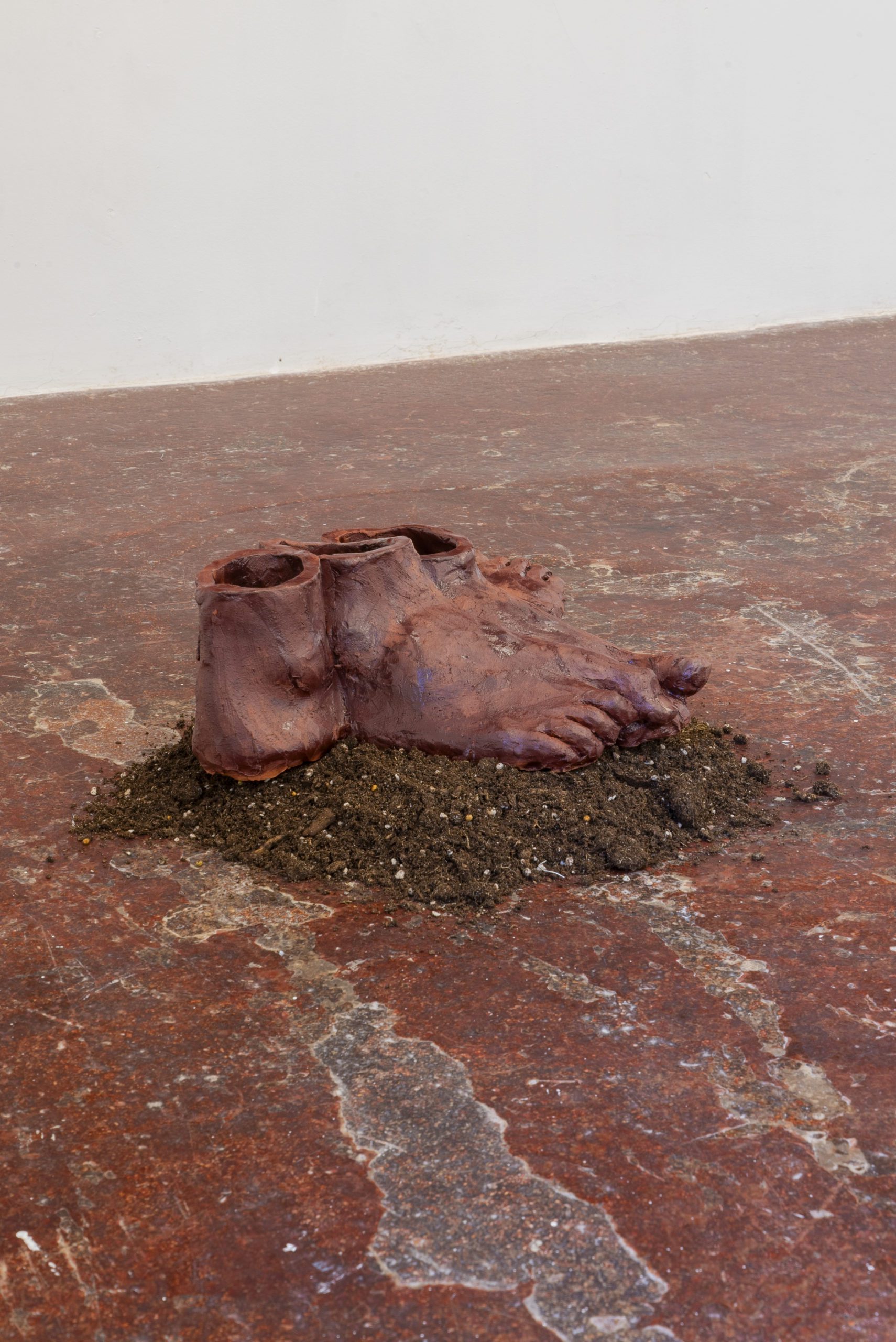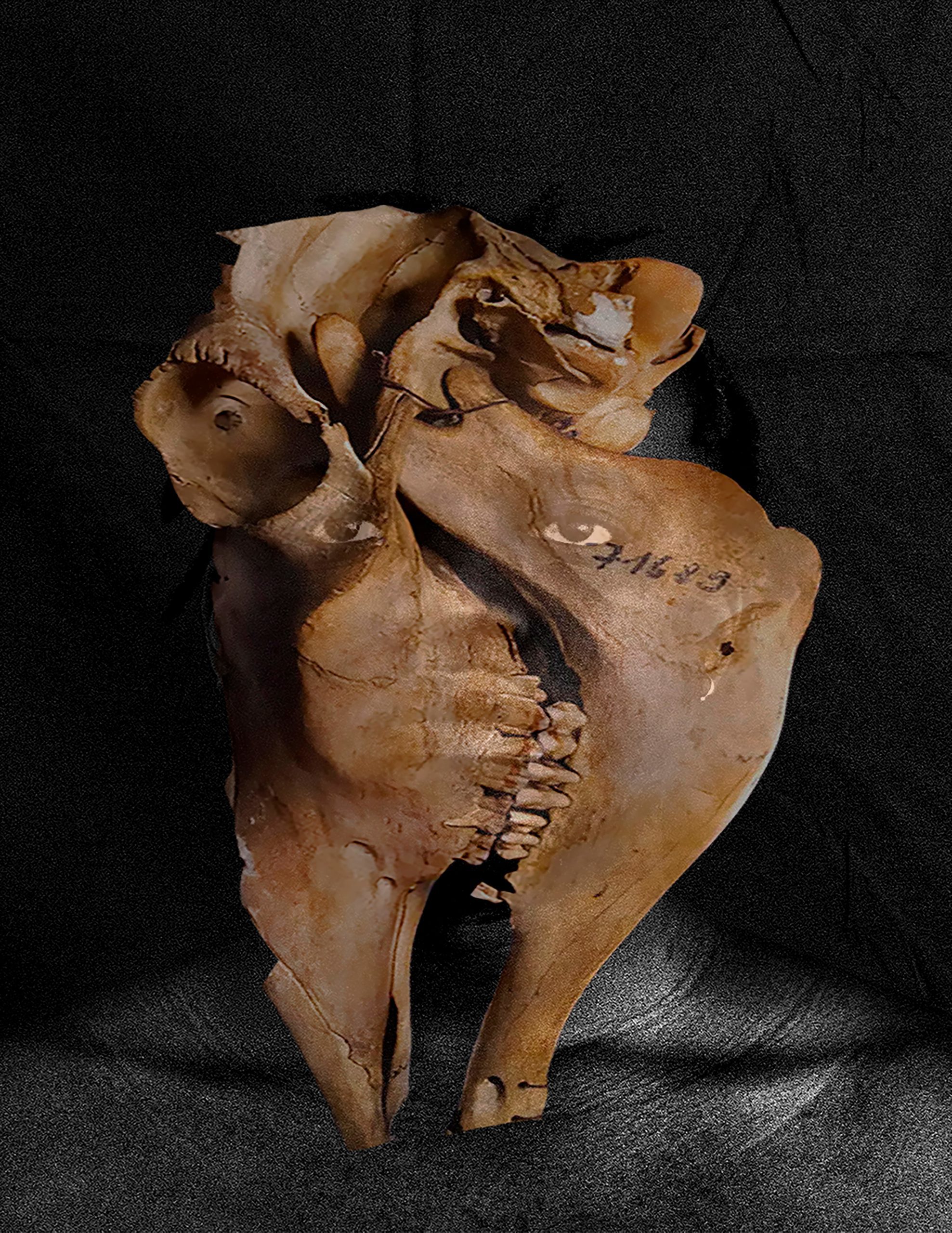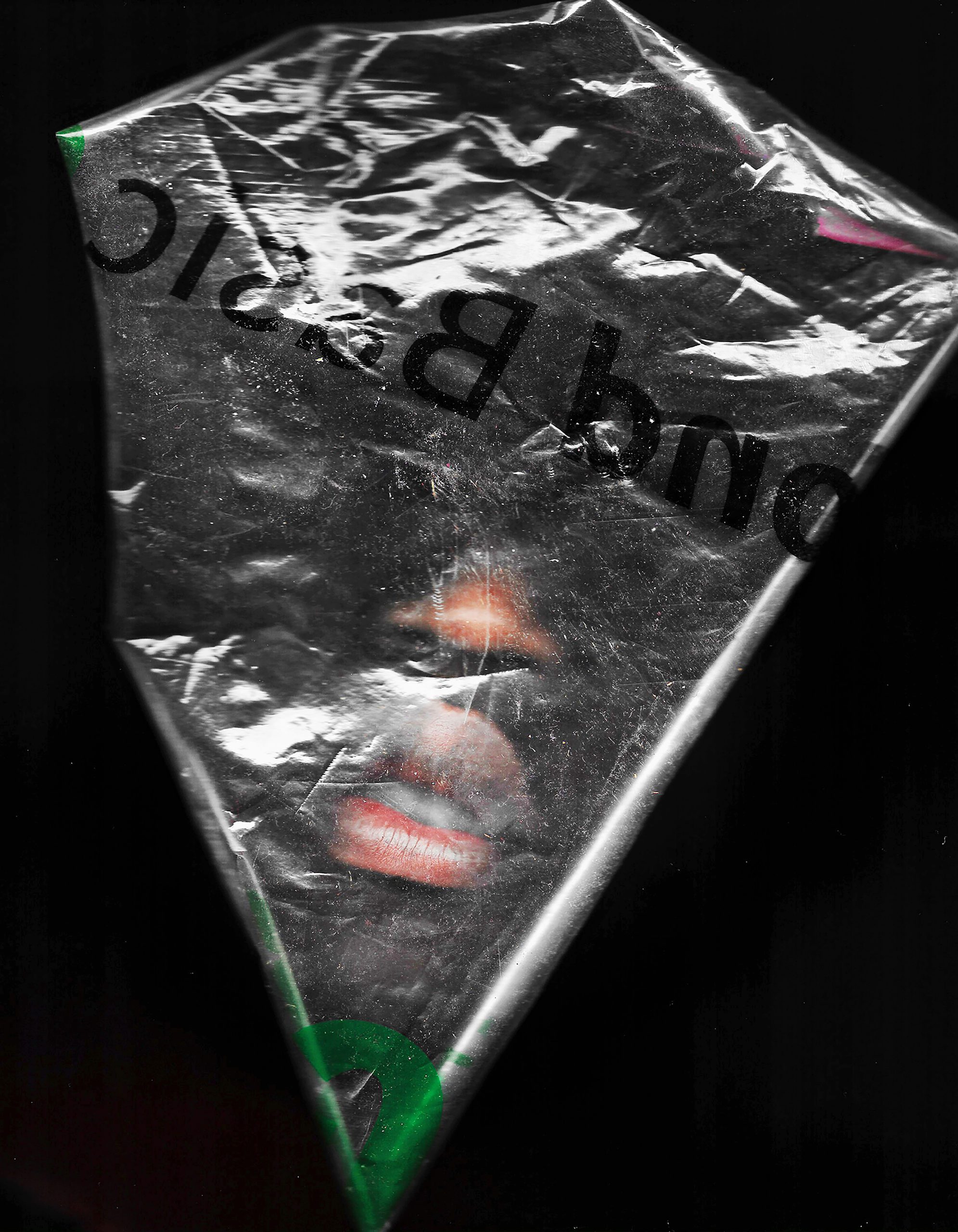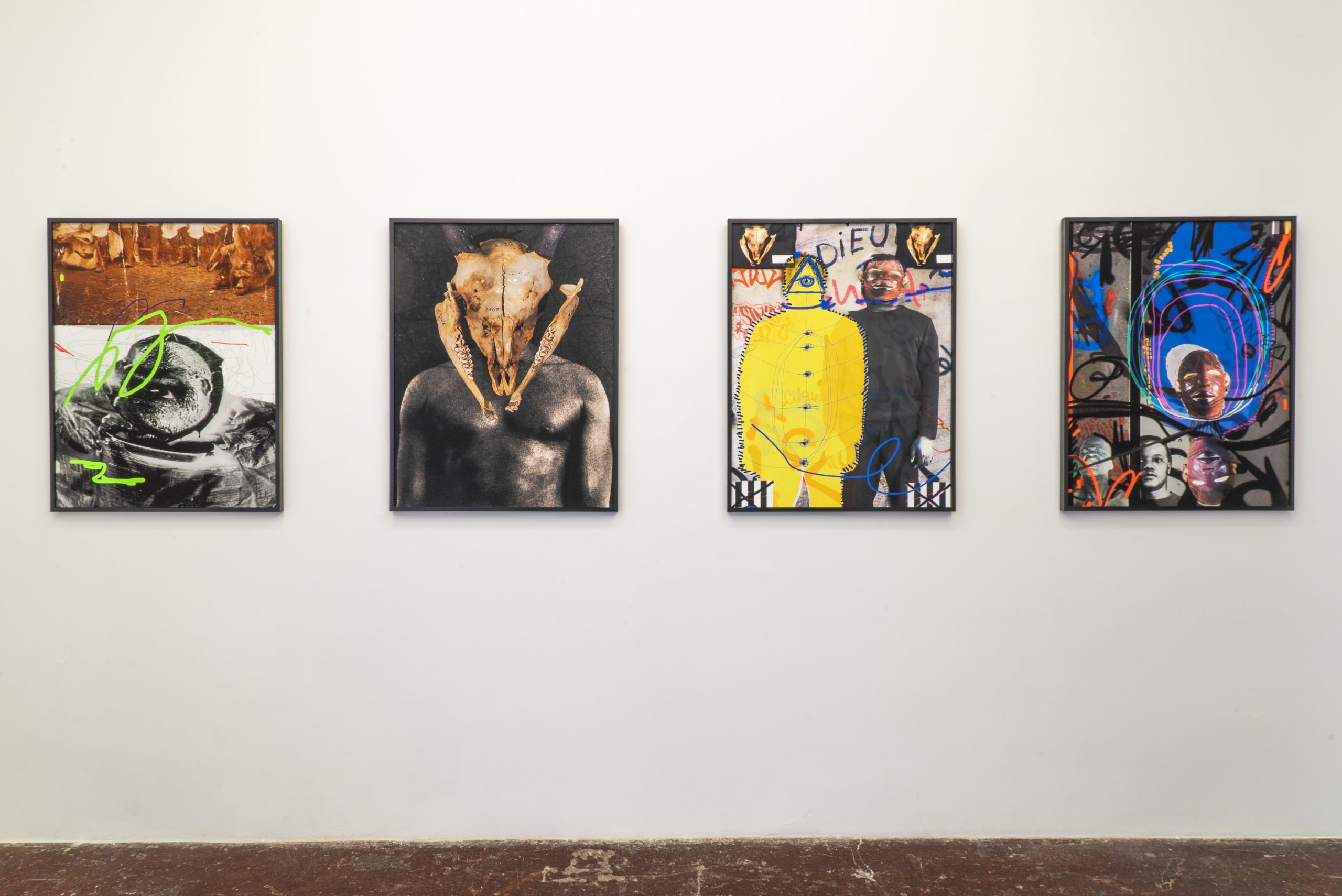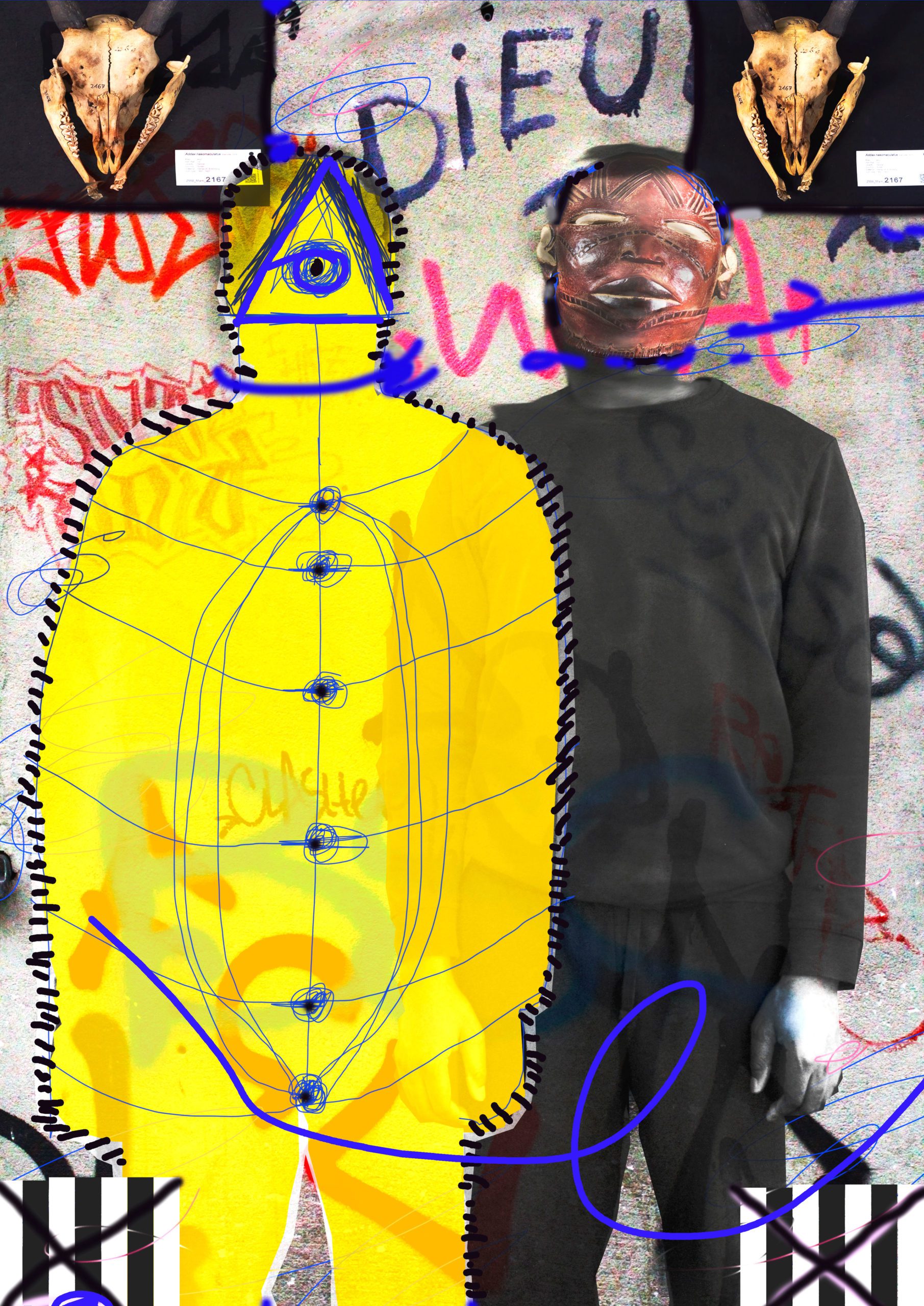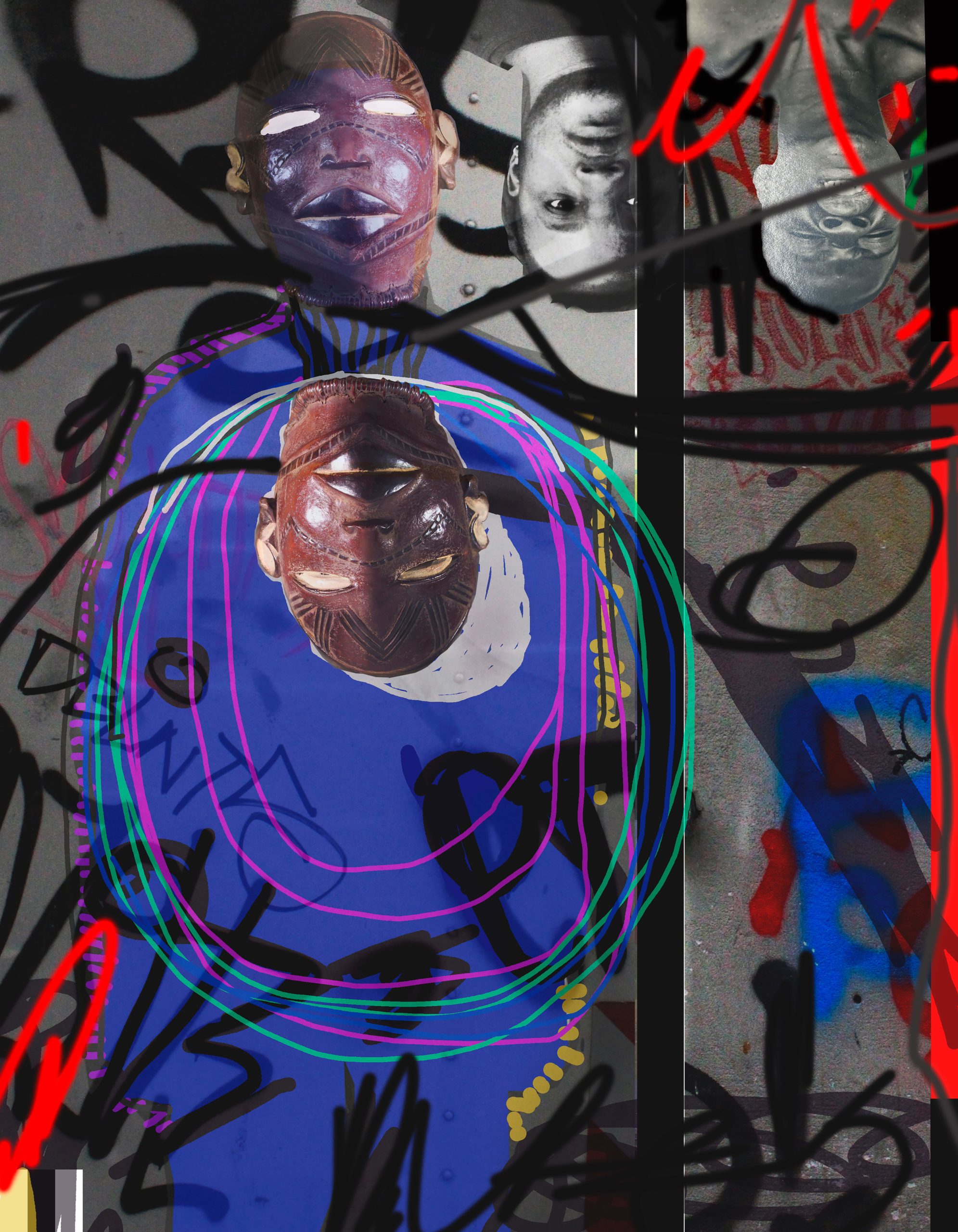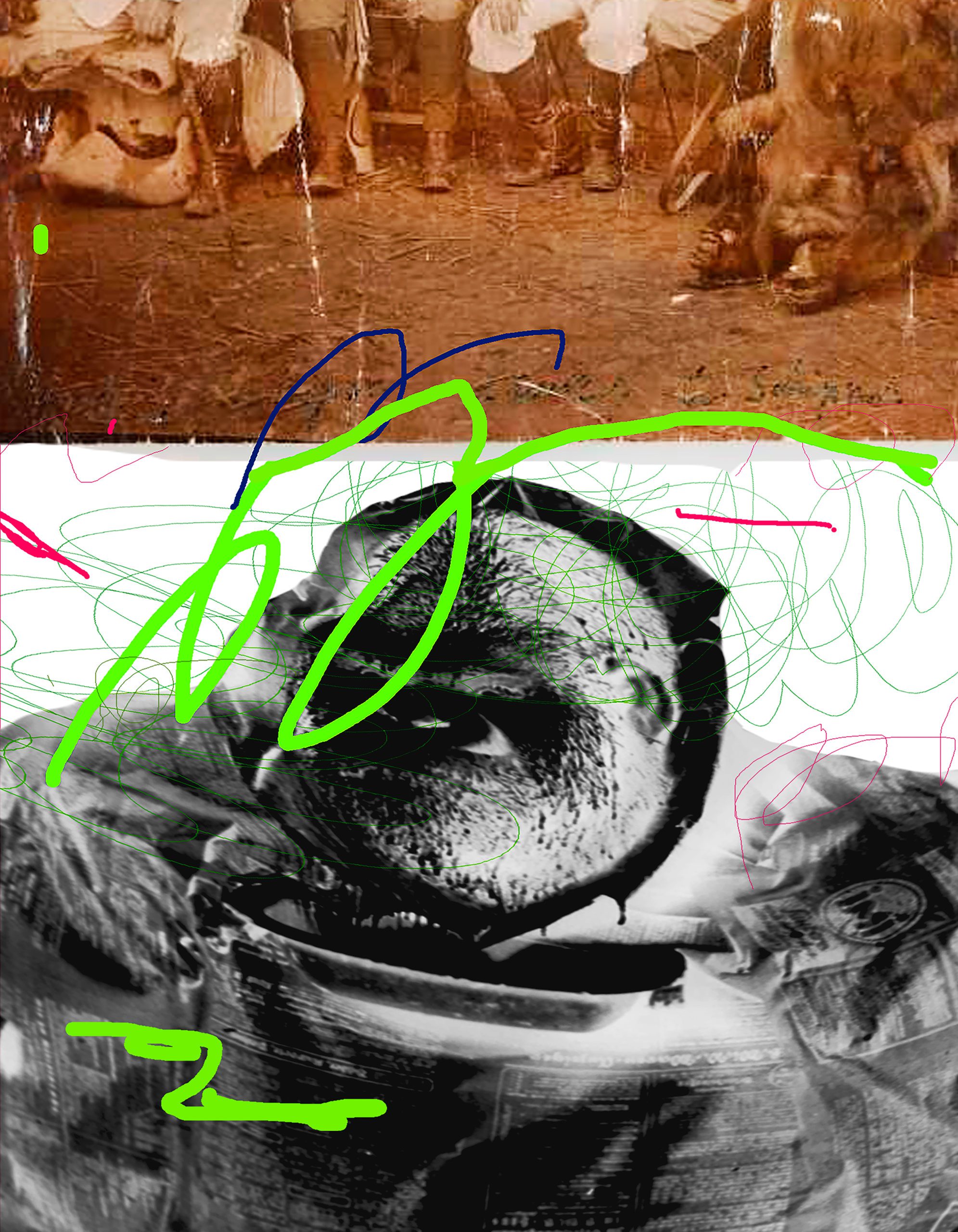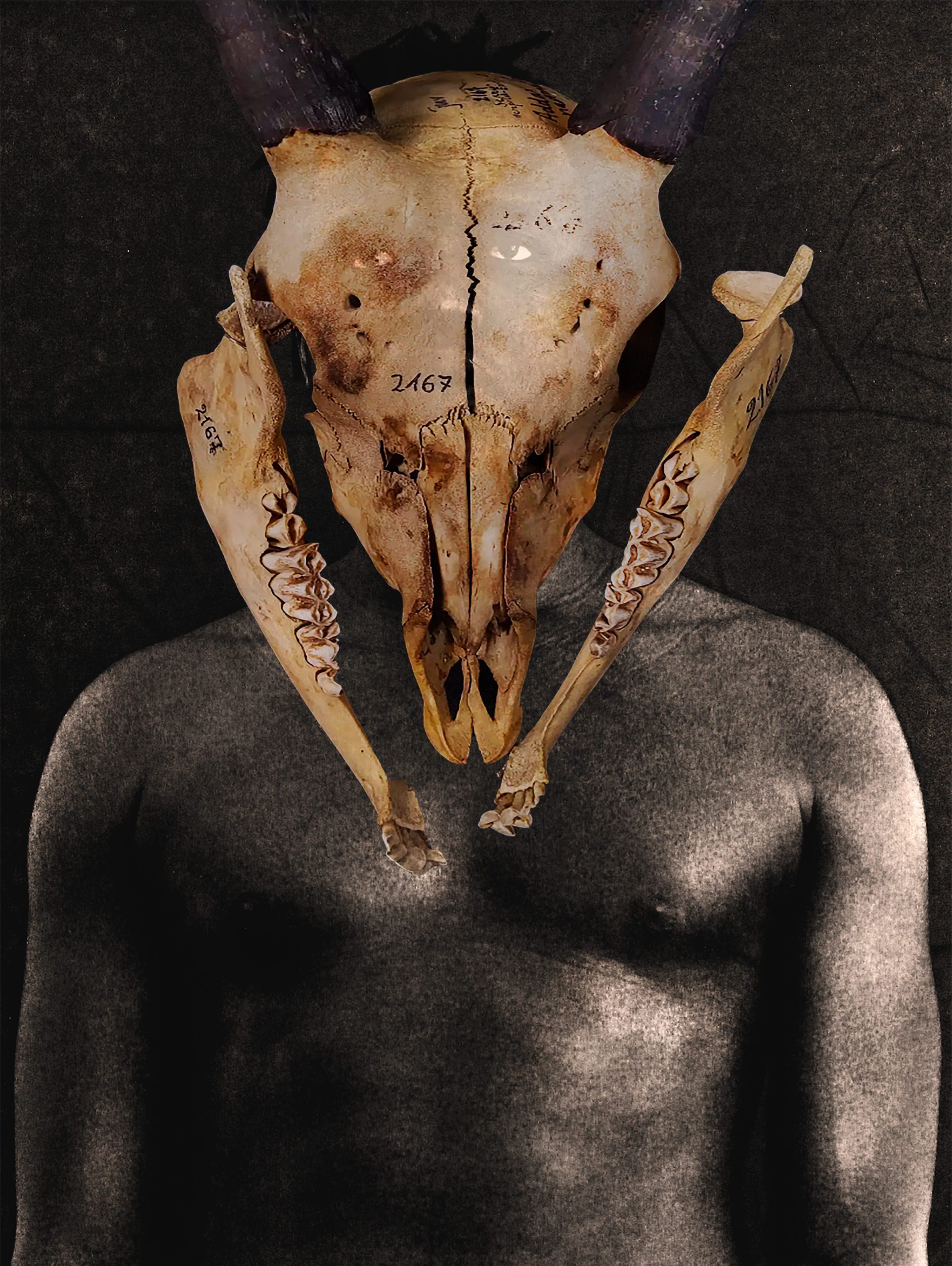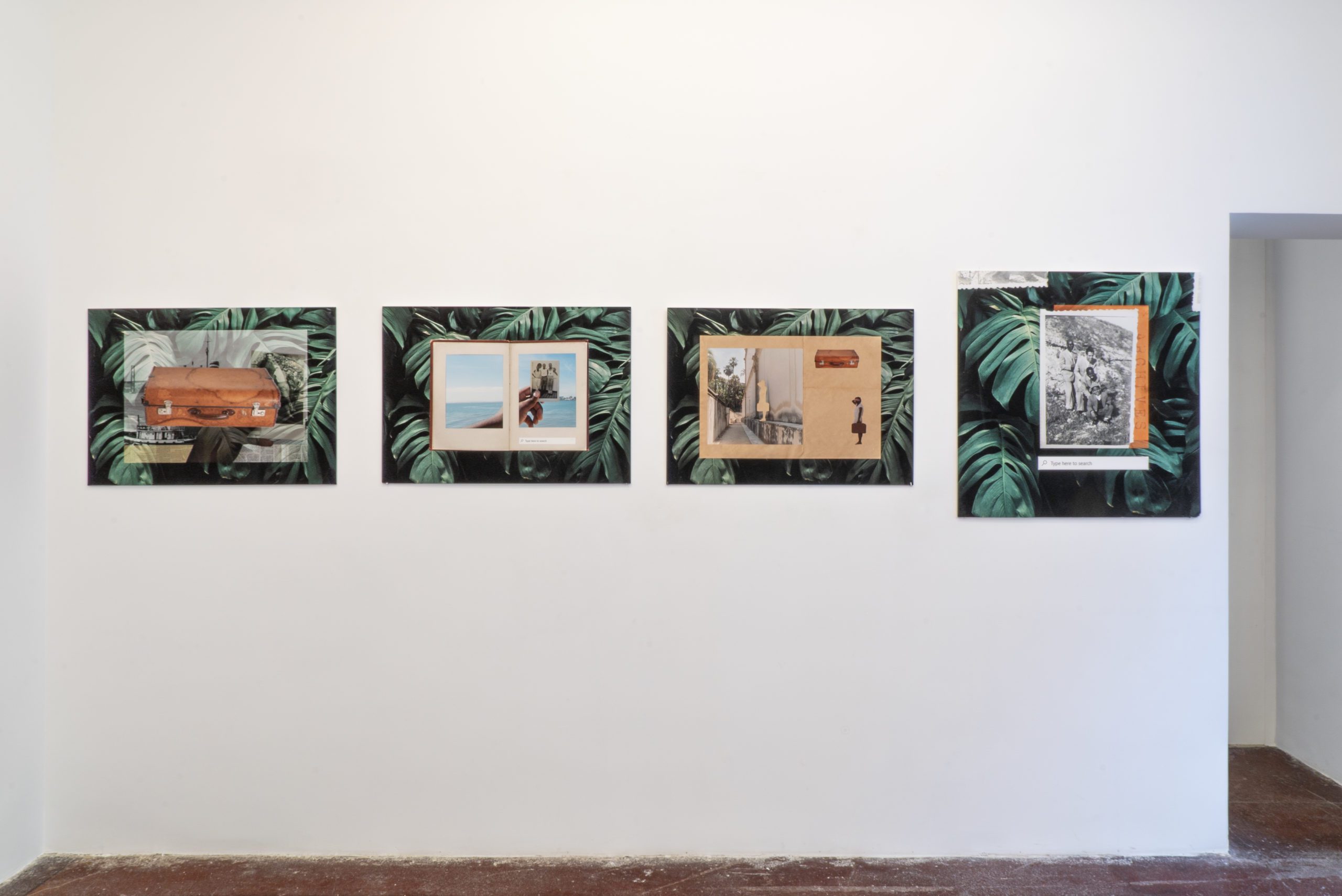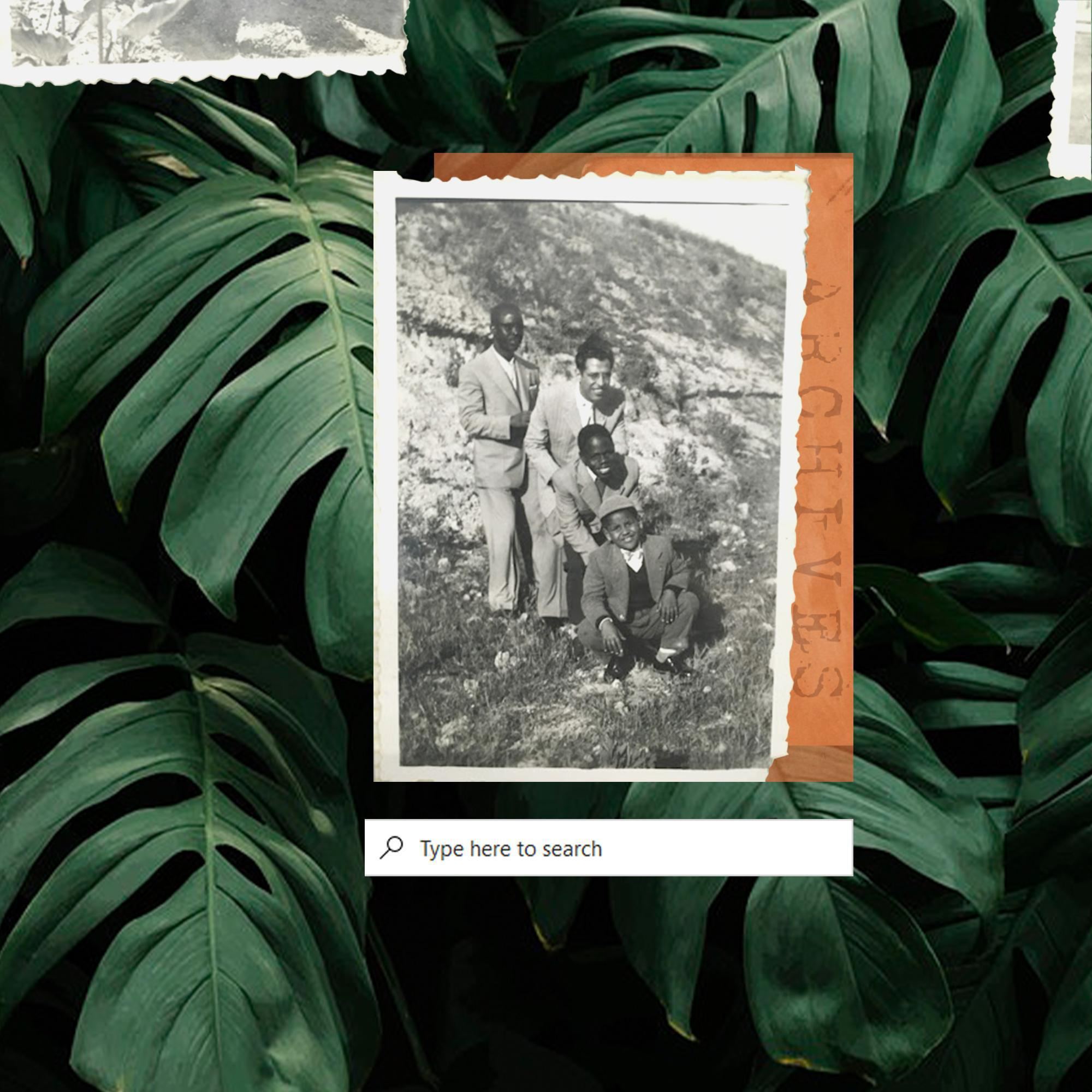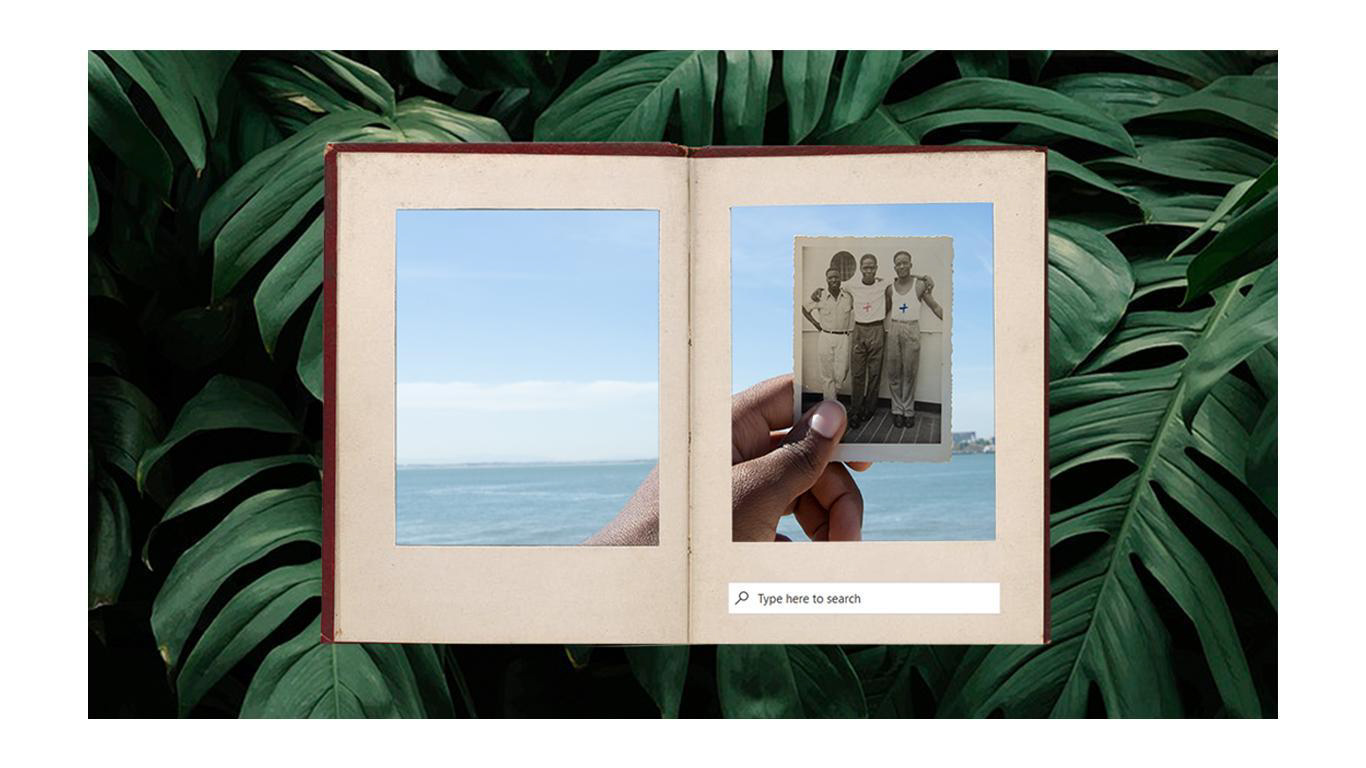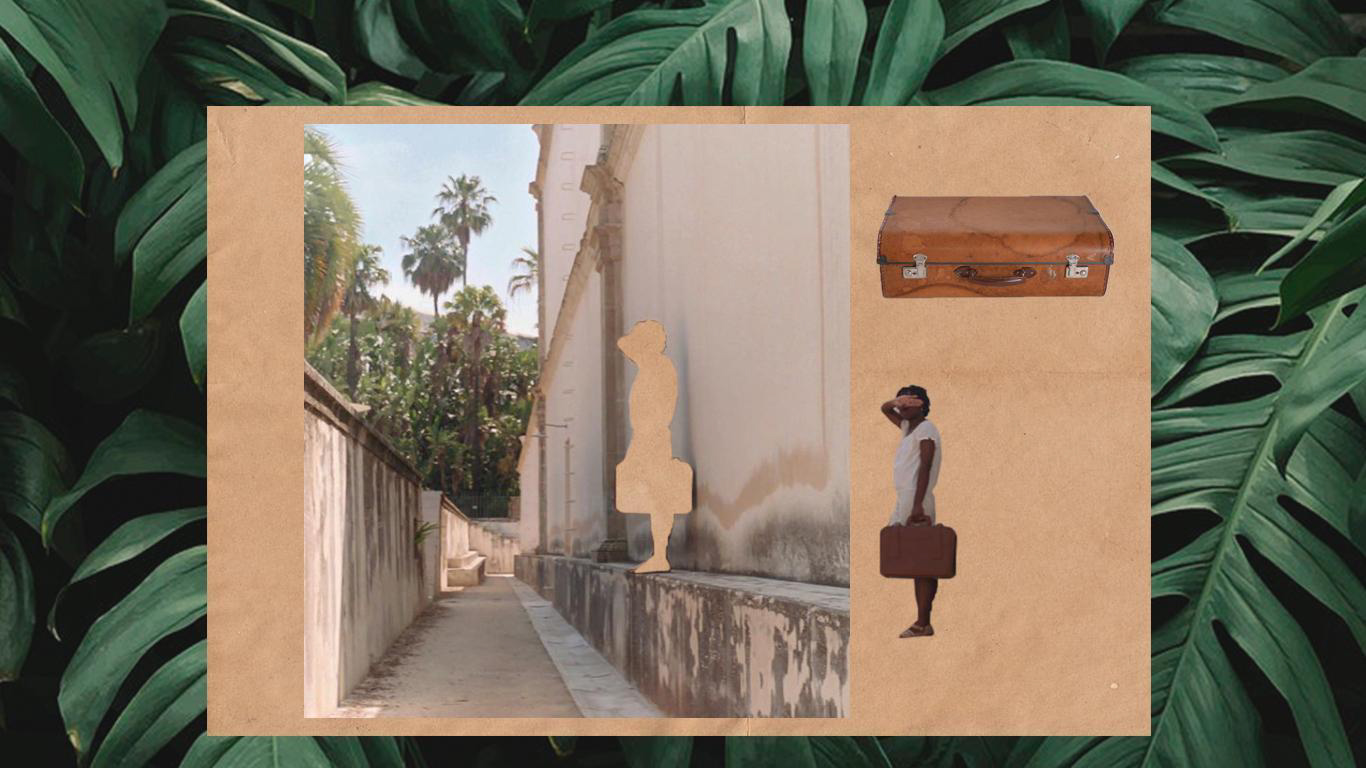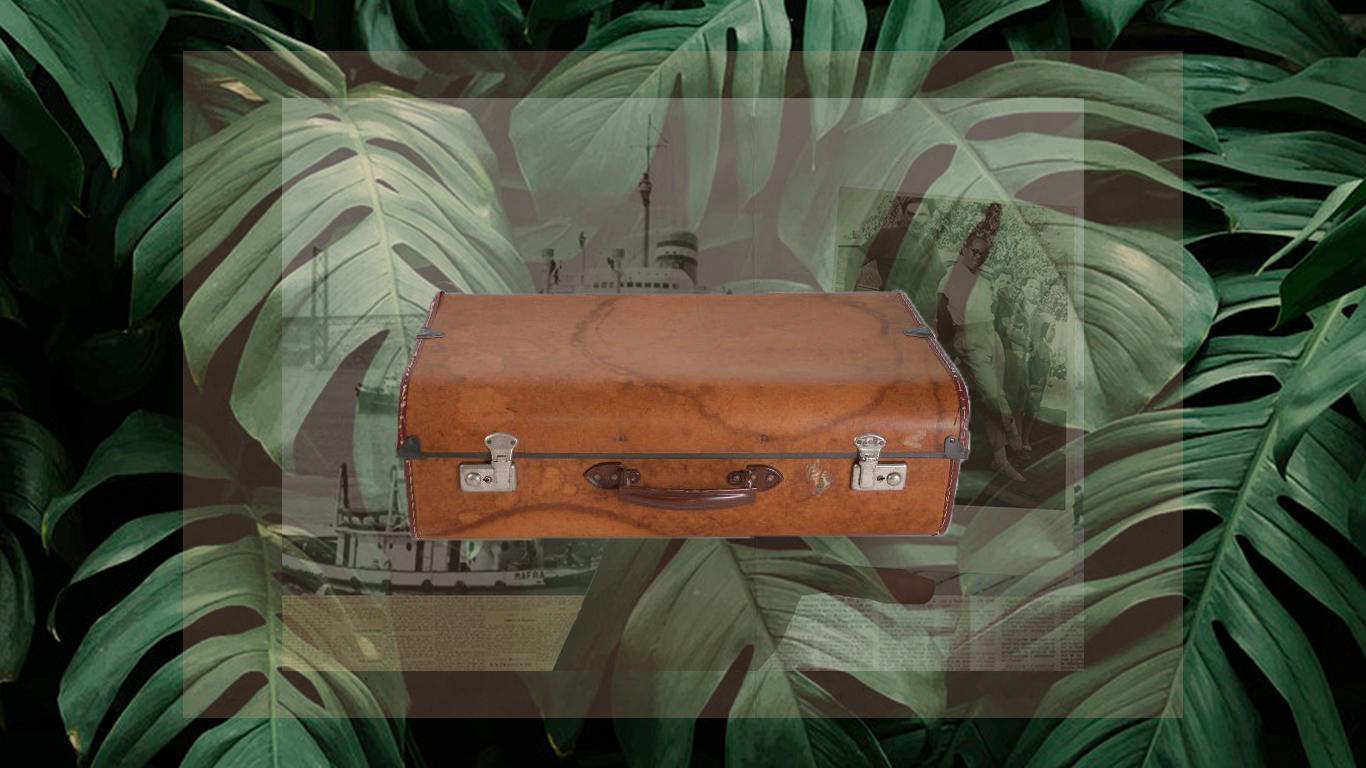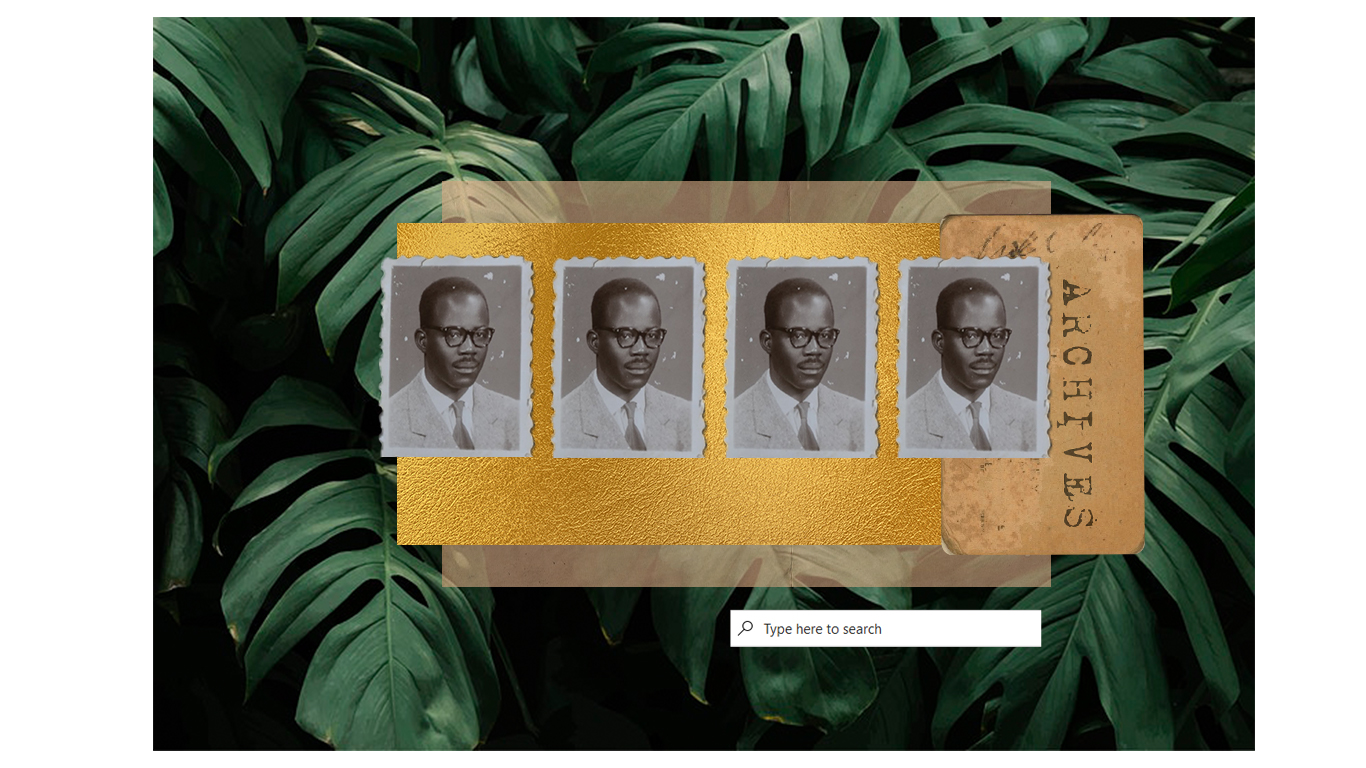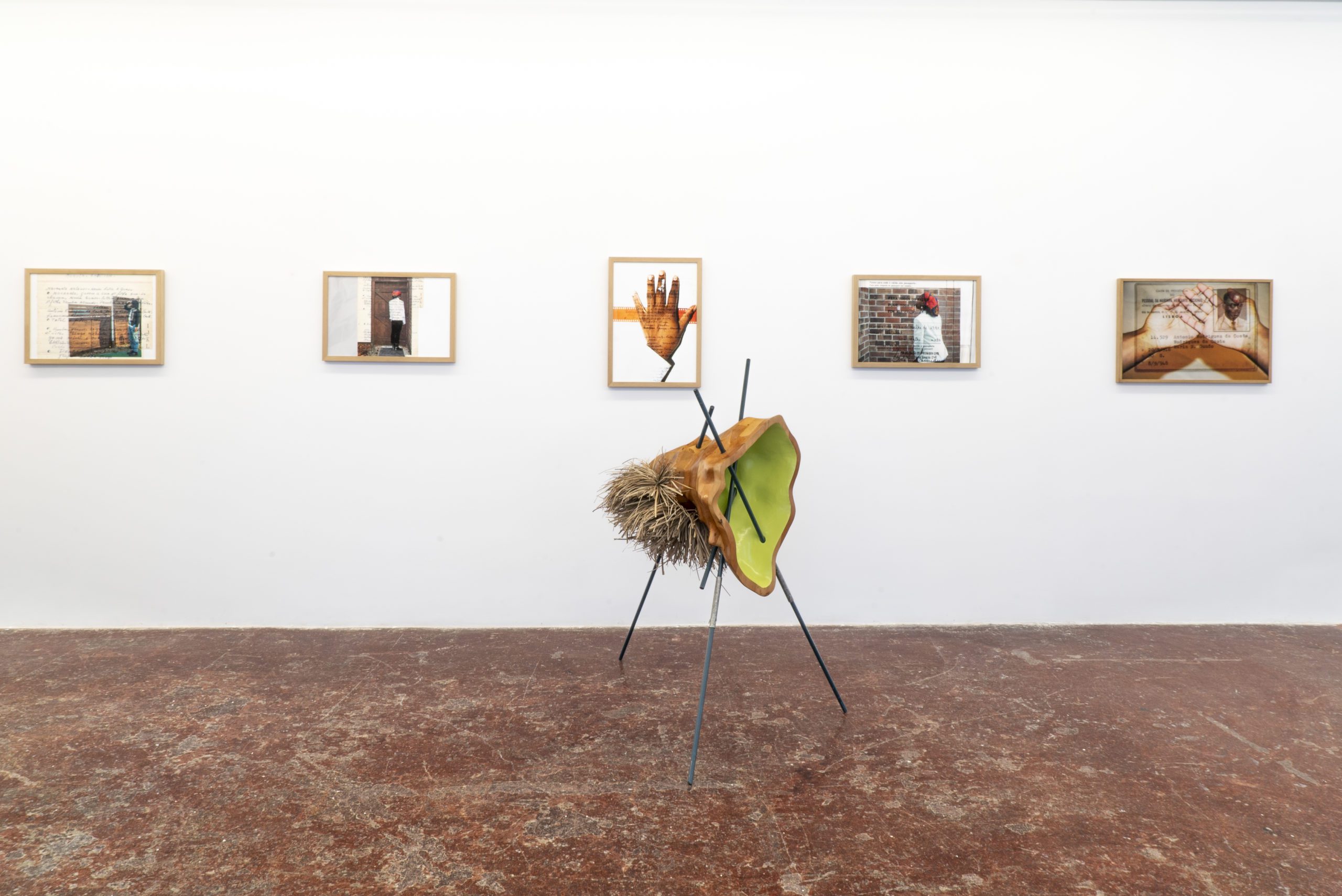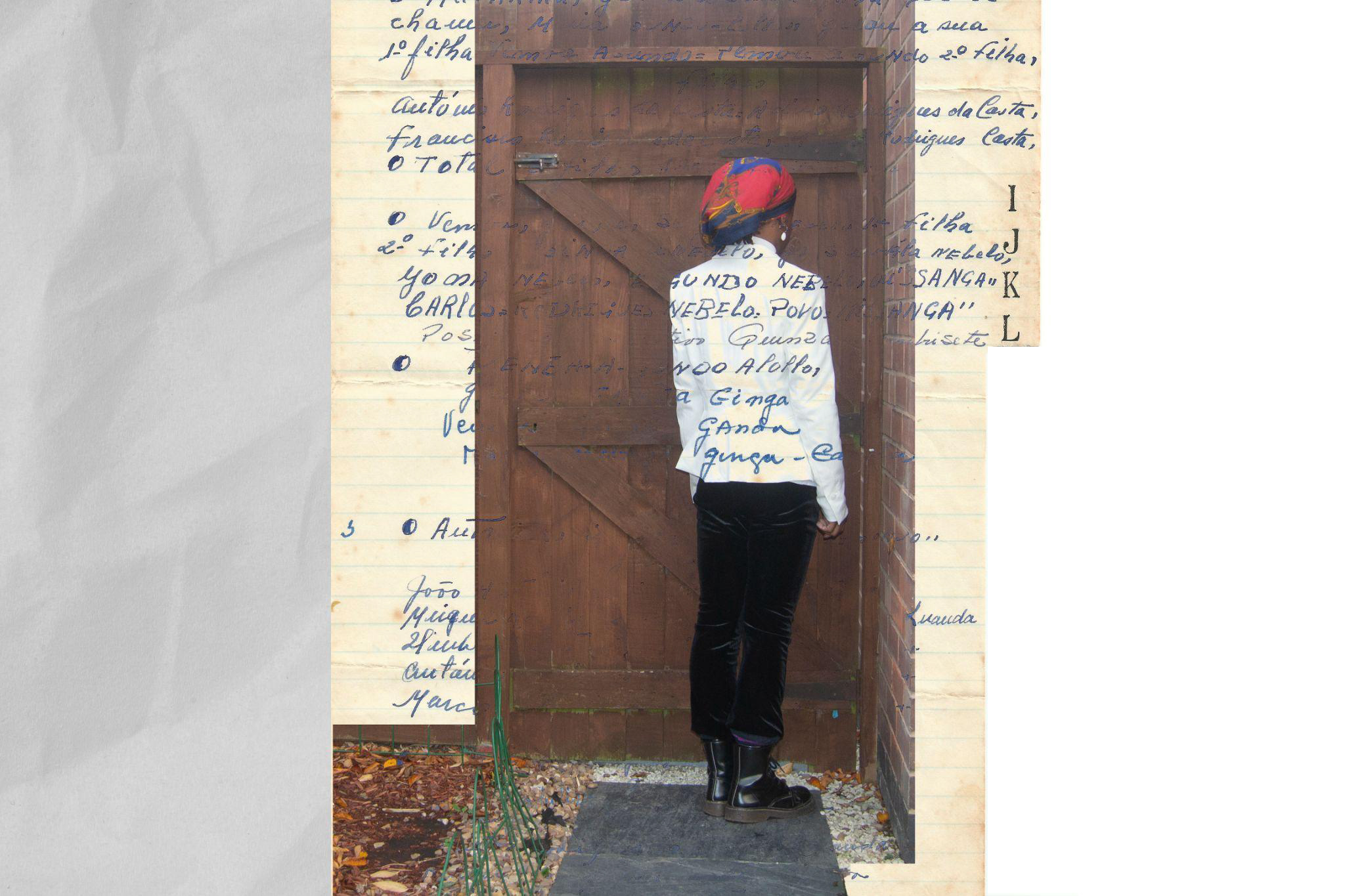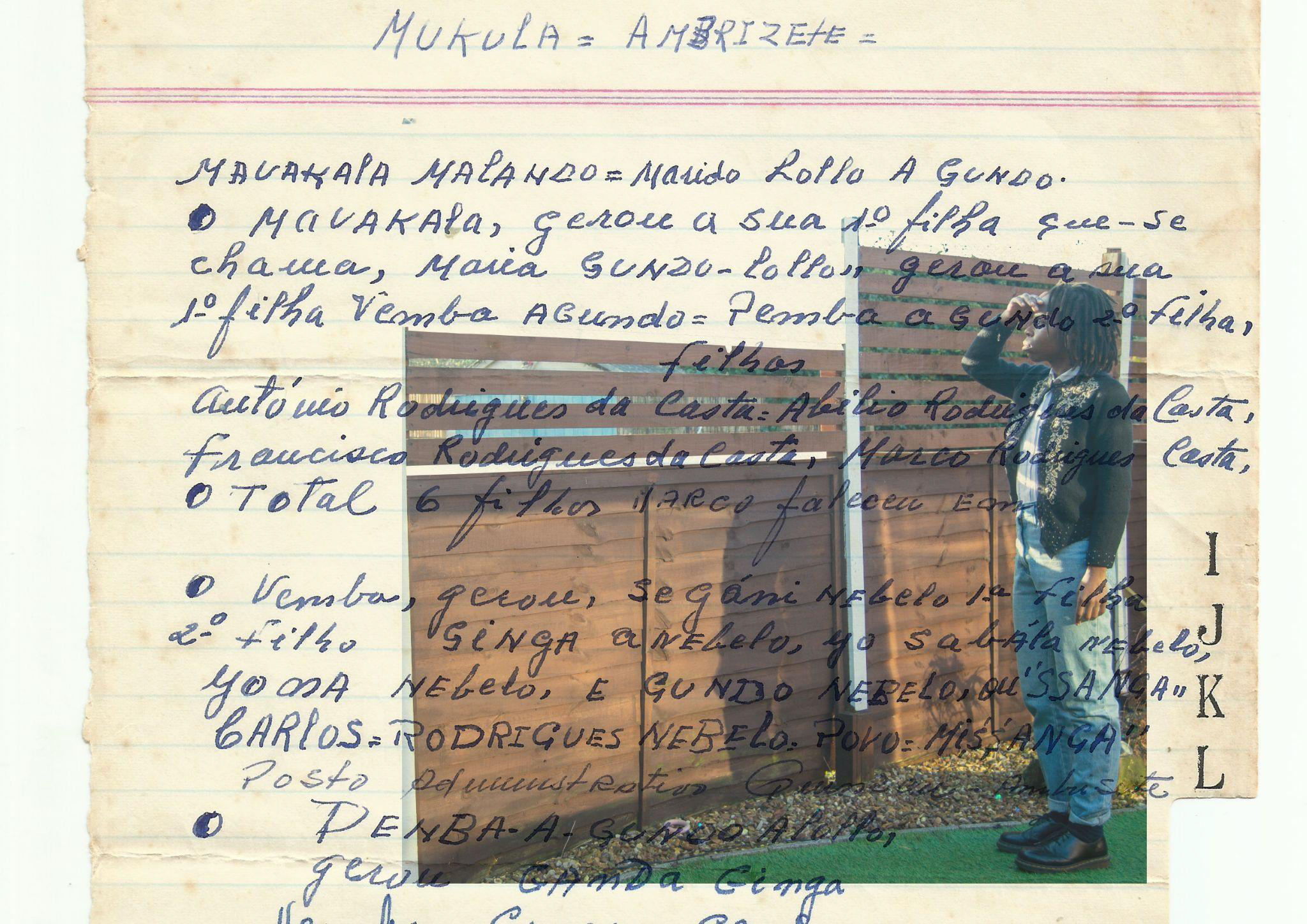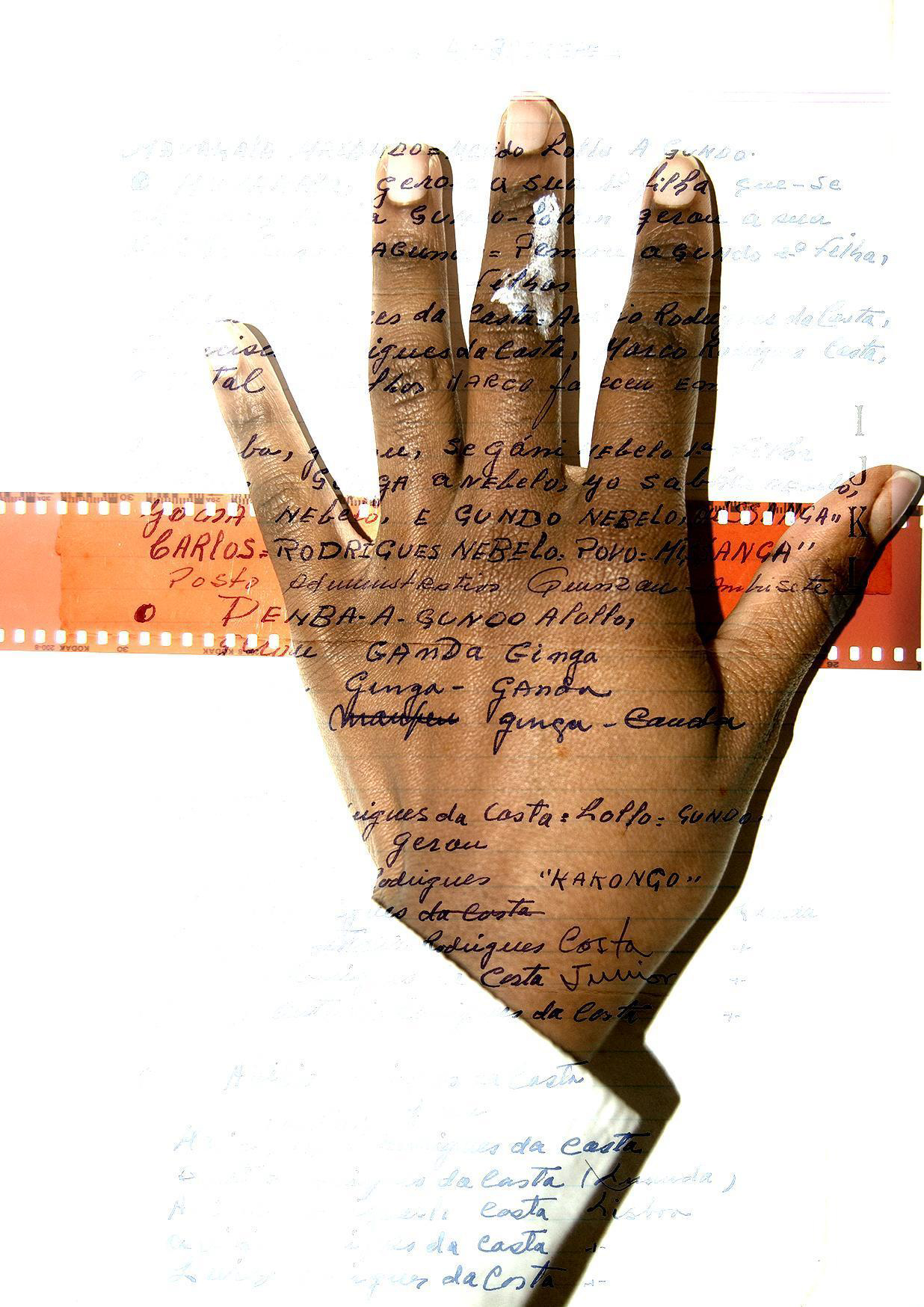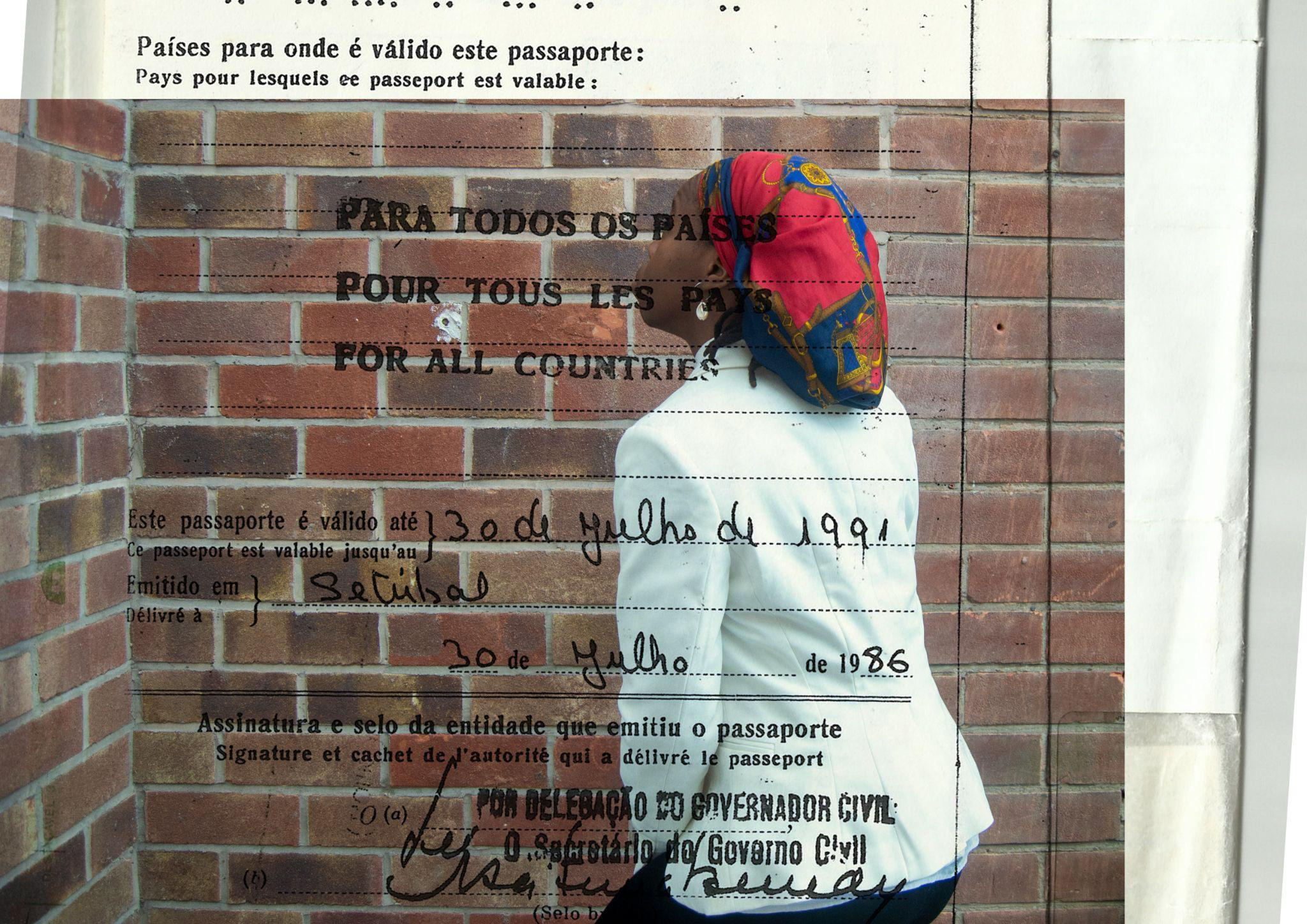aquilo.en
Throughout the centuries, the human body has been one of the major subjects of interest for artists. If we consider that we, as human beings, inhabit our bodies, the fascination of artists with it is hardly surprising. However, over time, the way artists approach the human body has naturally evolved. In recent years, much has been written about the body, and the focus has shifted to the idea of the body as a vehicle of memory, as an expression of new understandings of sexuality and gender, and as a racialized body.
In a bold and unusual approach, Sara Carneiro’s video work Colonial Project (2020–23) tackles the vast metaphor of colonial horror and the subsequent historical amnesia of its processes through a mostly abstract visual language. Frequently using the idea of the fluidity of matter and materials as evocative reminders of the mineral exploitation that founded the colonial project, the images she creates refer to the imposed domination of the land through the palm that grasps and squeezes, to the virginal body of milk and sugar, to the hand’s traces that refer to memory (or its loss), to scorched earth, and to eyes extinguished by fire. The work is marked by a great subtlety, but also by an inherent violence.
The work of Nuno Silas is openly focused on the idea of constructing African identity through the representation of the body. The concept of identity is ever-present in this powerful series of collages and digital montages. The works in this exhibition come from various moments in his practice, with a special focus on the series The Intensity of Identity (2019–20). The constant use of his own portrait serves as the starting point for a narrative of the transformed and meaningful body. The artist employs methods similar to psychic automatism to construct his images. This technique, used by the Surrealists, consists of freeing the unconscious and allowing the line — or in this case, photographic imagery — to flow without constraint or judgment. In these images and this body, we see allusions to imagined feelings, migration, desire, spiritual forces, violence, and even magic. It is a political essay of personal expression.
In her artistic practice, Sofia Yala consistently turns to the use and interpretation of family photographic archives to invite us to retell stories and figures between Angola and Portugal. In the series Type here to Search (2020), through the language of computing and the Microsoft search bar, Yala adds a contemporary layer to the archive, making us realize that, as viewers of these images, we are compelled to mentally investigate. The artist tells us that in these images we also see people who, although present in family albums, remain unknown — emphasizing the importance of photographic archives of Black families. On the other hand, in the series The Body as an Archive (2020–21), Yala shows us history inscribed through archival memories written on the surface of the skin, as if history were marked on the body. As an example, the artist shares the story of her grandfather, who worked in the merchant navy, documenting the family’s transition into the present. Through her use of varied materials and timelines, Sofia Yala’s work gives form to the essence of hybridity.
The surprising sculptural journey of Luís Santos is firmly rooted in the space we, as viewers, physically inhabit. These assemblages, presented at an almost human scale, create a special sense of empathy because they materialize as figures. The three works presented here —Fragments of Being #3 (2023), TV Contraption (2022), Void (2022)— emerge as imaginative and ambiguous figures that evoke the electronic and technological fears we are exposed to, the dismemberment of a body vulnerable to entangling networks, absorbing biological spaces that pull us into the void, or the distant and digital image of nature seen through a screen. In another moment, the glazed ceramic sculpture Anxious (2024) draws us closer to a more personal metaphor of the crossroads. The three crossed feet bring us to a halt… but there is also loose straw and clay bells that sound as we pass, announcing a more peaceful conversation with nature.
The title refers to the solo exhibition by Mozambican artist Luís Santos at the Franco-Mozambican Cultural Center (CCFM) in Maputo, Mozambique (2019), curated by Sara Carneiro.
Ângela Ferreira Lisbon, 2 April 2025
Sara Carneiro
Portugal, 1994
Sara Carneiro (Viseu, Portugal, 1994) is a Portuguese visual artist based in Matola, Mozambique. After graduating Multimedia at the Faculty of Fine Arts of the University of Porto (Portugal) in 2017 she moved to Mozambique, where she began to lecture Multimedia at the Arts Faculty of the Institute of Arts and Culture (ISArC).
In the past few years the artist has been showcasing her work internationally in exhibitions and film festivals. Her film “Chapter One: The Arrival” was screened in various festivals such as the African Video Art Festival Boda Boda Lounge in 18 cities across the continent, Proyector – Video-art Platform in Madrid, and FUSO Videart Festival in Lisbon. In 2023 she had her 3rd solo exhibition intitled “Blood of my blood” at the historic Fortress of Maputo.
Through creating abstract and atmospheric imagery in mediums ranging from sculpture to experimental film, Sara explores symbolic relations between materials that allow her to speak about history, identity and notions of power.
Sara Carneiro
Colonial Project Trilogy
2023
Video, color, stereo
22’09»
Ed. 1/3 + 1AP
Sara Carneiro’s experimental film trilogy, Colonial Project Trilogy, offers a critical reflection on European colonialism and its enduring consequences, providing a provocative and metaphysical analysis of historical events and their contemporary resonance. Comprising three chapters—Chapter One: The Arrival, Chapter Two: Dominance, and Chapter Three: Amnesia—the trilogy unfolds as a cinematic exploration of occupation, control, and the erasure of memory.
The artist employs symbolic materials such as burnt car engine oil, earth, and fire to construct landscapes and abstract scenes that evoke sea voyages, territorial usurpation, the exploitation of natural resources, mechanisms of colonial domination, and power hierarchies.
Whiteness emerges as a central theme, intersecting with questions of identity, as the artist uses her own image as a medium to question and confront the status quo.
Maintaining an experimental language throughout, the films establish a dark and tense atmosphere, inviting viewers to reflect on the enduring legacy of colonial structures that continue to shape the present.
Luis M. S. Santos
Mozambique, 1993
Luis M. S. Santos (1993) is a Mozambican sculptor who graduated from the Faculty of Fine Arts at the University of Porto in 2016. Since 2017, he has been teaching at the Faculty of Arts of the Higher Institute of Arts and Culture in Mozambique.
He has participated in international exhibitions in Mozambique, South Africa, and Portugal, including “What the Body Has Already Forgotten” (Franco-Mozambican Cultural Centre, 2019) and the Paulo Cunha e Silva Award (Porto Municipal Gallery, 2023). He has been honoured with the Paulo Cunha e Silva Award (3rd edition), the Prince Claus Seed Award, and the Mozal Arts and Culture Award (all in 2023).
Drawing is central to his creative process, allowing him to anticipate technical challenges, stage performances, and explore the relationship between the body and sculpture. His work addresses social and political injustices, using the African context as a starting point, while reflecting on the role of art in social transformation and questioning the intersections between humanity, nature, and technology.
Luis M. S. Santos
Fragments of Being #1
2023
Chanfuta wood, ceramics, iron rod, ratchet lashing belt
320 x 170 x 140 cm
2.800 (VAT included)
Fragments of Being serves as a metaphorical self-portrait, where the artist embodies a collection of objects in an undefined arrangement. Cultural elements intertwine with structural and found materials, forming a fragmented yet cohesive body. The work explores the fluidity of identity and the interplay between belonging and displacement. It reflects on the capacity to adapt—to spaces, contexts, and evolving selves. Through its juxtapositions, the piece invites contemplation on the complexity of existence, where meaning emerges not from fixed definitions, but from the dynamic relationships between its parts.
Luis M. S. Santos
TV Contraption
2022
Television set, dvd, flash drive, electric cables, expansive foam, plexyglass and iron rod
154 x 52 x 59 cm
Hovering above the screen, the creature observes itself traversing the boundaries of space and time. The device, a probe-like apparatus adorned with handles and cables, offers the audience an intimate, voyeuristic perspective—an «over-the-shoulder» glimpse into its journey. Within the video, digital and natural landscapes collide and merge, creating a fluid, interconnected realm. The creature navigates these hybrid spaces effortlessly, blurring the lines between the virtual and the tangible. The work invites reflection on the convergence of technology and nature, and the evolving relationship between identity, perception, and the environments we inhabit.
Luis M. S. Santos
Void
2022
Pine wood, straw, iron rod
140 x 120 x 60 cm
Sold. Private collection
Void explores themes of emptiness and infinity, drawing inspiration from the enigmatic nature of a black hole. The interplay of polished and raw materials creates a dynamic tension, while the vibrant interior colour contrasts subtly with the natural elements on the exterior. The piece bridges the gap between contemporary design and cultural craftsmanship, inviting reflection on existence, infinity, and the unseen forces that shape our reality.
Luis M. S. Santos
Anxious
2024
Glazed earthenware
30 x 30 x 15 cm
Sold. Private collection
Anxious captures the tension and disarray of modern societal struggles, reflecting themes of social injustice, displacement, and the fight for survival. The intertwined forms symbolize the chaos and conflict inherent in human interactions, where individuals often undermine one another in the pursuit of advancement. The piece serves as a commentary on the collective anxiety born from global crises—war, climate change, and inequality—and the toll these pressures take on humanity’s ability to coexist and thrive.
Nuno Silas
Mozambique, 1988
Nuno Silas explores the relationship between media, identity, history and questions the definition of art. His practice encompasses installations, painting and films, and he uses performance to create or reconstruct an artistic message, a sort of personal reality. Nuno Silas was born in Maputo, Mozambique and lives between Germany, Mozambique and Portugal. He is currently finishing his master studies at the University of Bayreuth, where he holds a scholarship from the Calouste Gulbenkian Foundation, Portugal.
Nuno Silas develops his artistic practice around themes such as identity, place, history, memory, desire, and democracy. His work often takes the form of installations that suggest a sense of provisional conclusion, operating as rhizomatic structures that question hierarchies, performativity, and the reconstruction and innovation of art as a concept.
His practice is rooted in lived experiences and spatial encounters, incorporating appropriated texts and gestures from popular culture, and combining materials like metal, fabric threads, and found objects from urban environments. These are often assembled on cardboard surfaces, forming hybrid, layered compositions.
In photography, Silas explores a kind of psychic automatism, generating fictional impressions of emotion. These images open up a multiplicity of discourses and meanings, evoking the atmosphere, imagination, migration, and the operational magic of time and place.
While his work engages with complex ideas, Silas also embraces instinctive, interior impulses, avoiding excessive rationalization. His visual language includes rephotographing, layering, pixelation, and superimposition, creating representations that speak to desire, suffocated bodies, violence, and, at times, spiritual forces operating within the body.
Through visual improvisation and repetition, his work poses intimate and political questions such as: «Who am I?» This inquiry becomes an act of self-expression and political presence, especially in relation to Black identity. His practice critically engages with the representation of the Black body in art, offering multiple and fluid perspectives.
The works of Nuno Silas emerge from a subjective position, perhaps as a reconstruction of multiplicities—structures and energies embedded in the world that surrounds us. Through the repetition of gestures, his work points to and amplifies the forces that shape our perception and being.
Nuno Silas
From the series «The Intensity of Identity»
2019-2020
Inkjet print on Hahnemühle PhotoRag 188gr paper
90 x 70 cm
Ed. 2/10
Nuno Silas
From the series «The Intensity of Identity»
2019-2020
Inkjet print on Hahnemühle PhotoRag 188gr paper
90 x 70 cm
Ed. 2/10
Nuno Silas
From the series «The Intensity of Identity»
2019-2020
Inkjet print on Hahnemühle PhotoRag 188gr paper
90 x 70 cm
Ed. 2/10
Nuno Silas
From the series «The Intensity of Identity»
2019-2020
Inkjet print on Hahnemühle PhotoRag 188gr paper
90 x 70 cm
Ed. 2/10
Nuno Silas
From the series «The Intensity of Identity»
2019-2020
Inkjet print on Hahnemühle PhotoRag 188gr paper
90 x 70 cm
Ed. 2/10
Nuno Silas
From the series «The Intensity of Identity»
2019-2020
Inkjet print on Hahnemühle PhotoRag 188gr paper
90 x 70 cm
Ed. 2/10
Sofia Yala
Portugal, 1994
Sofia Yala, born in Lisbon (1994), is an Angolan/Portuguese visual artist whose creative journey has found a home between the UK, Portugal, and Angola. Her art practice is a blend of exploration and expression, anchored in a connection to archival material, and image making, aligned with imaginaries, narratives, or the long tapestry of identities.
Embodying the essence of hybridity, Sofia’s artistic practice is a living entity in itself—a work-in-progress that resists finality. Her approach delves into the past, weaving it with the present, while intentionally reserving space for ongoing reflections that embrace the future. This unceasing evolution remains true to the core of her vision, underscoring an unbreakable link between heritage and modernity.
Sofia crafts her pieces with attention to detail, manipulating textures and juxtapositions. Through her process, she reconfigures memories and lived encounters, ushering them into new and transformative forms.
With an academic foundation in African Studies and Anthropology, Sofia ventured further into the realm of creativity, culminating in her 2021 achievement of a Master’s degree in Film & Photography. This academic foundation has not only fortified her artistic prowess but has also enriched her work with a multidisciplinary perspective.
In 2022, the artist had her inaugural solo exhibitions in both Lisbon and Brighton, offering audiences an encounter with her narratives. Additionally, her series shone at the 13th Bamako Encounters African Biennale of Photography, acknowledging her resonance within the realm of contemporary photography. She has also recently become a participant in the 5th edition of the Nesr Art Foundation residency in Luanda, further fueling her artistic journey.
‘Type here to search’ is a series that explores questions surrounding photographs of unknown people in our photo albums. The Microsoft search bar offers a contemporary lens through which to view archival images, especially for the new generation, where technology is integral to everyday life and much information needs to be uncovered and redistributed. Through conversations with family members, I’ve come to realize that some information is permanently lost or fragmented. However, recognizing the significance of Black family albums and their representation in history serves as a personal motivation to digitize, or at least visualize, more of this history through artistic expression.
The visual representation of my family, often shown in photographs, reveals details representing Angolan families from the ’50s to the ’90s. It also traces their movement to Portugal and the formation of the African Portuguese-speaking communities. The artwork includes my grandfather’s documentation, such as private notes, a family tree, birthplaces, dates of birth, full names, passport, work contract, I.D., and international mail. Viewed across time, these documents transcend their everyday administrative purpose and become evidence reflecting a specific historical and political era. I recognize that there is always more to uncover about my family, but some records are lost, such as his «native I.D.» in Angola or records from his incarceration in Portugal by the authoritarian regime…
– Sofia Yala
Sofia Yala
From Type here to Search series
2020
Inkjet print on cotton paper
80 x 80 cm
Ed. 2/3 + 1AP
Sofia Yala
From Type here to Search series
2020
Inkjet print on cotton paper
57 x 80 cm
Ed. 2/3 + 1AP
Sofia Yala
From Type here to Search series
2020
Inkjet print on cotton paper
57 x 80 cm
Ed. 2/3 + 1AP
Sofia Yala
From Type here to Search series
2020
Inkjet print on cotton paper
57 x 80 cm
Ed. 2/3 + 1AP
Sofia Yala
From Type here to Search series
2020
Inkjet print on cotton paper
57 x 80 cm
Ed. 2/3 + 1AP
“The Body as an Archive” which includes my grandfather’s documents and performative self-portraits, is a layered documentation and personal reproduction of history and life choices. My current practice focuses on cultural and historical contexts, strengthened by the close family bonds created through this work. These bonds are essential for understanding and acknowledging the body as a caption and echo of my family’s path and history. This is why I work in an interdisciplinary way, to reflect the complexity of history and the depths of identity.
– Sofia Yala
Sofia Yala
From The Body as an Archive series
2020/2021
Inkjet print on cotton paper
41,5 x 63,5 cm (framed)
Sofia Yala
From The Body as an Archive series
2020/2021
Inkjet print on cotton paper
45,5 x 63,5 cm (framed)
Sofia Yala
From The Body as an Archive series
2020/2021
Inkjet print on cotton paper
64 x 46 cm (framed)
Sofia Yala
From The Body as an Archive series
2020/2021
Inkjet print on cotton paper
46 x 63 cm (framed)
Sofia Yala
From The Body as an Archive series
2020/2021
Inkjet print on cotton paper
52 x 77 cm (framed)


